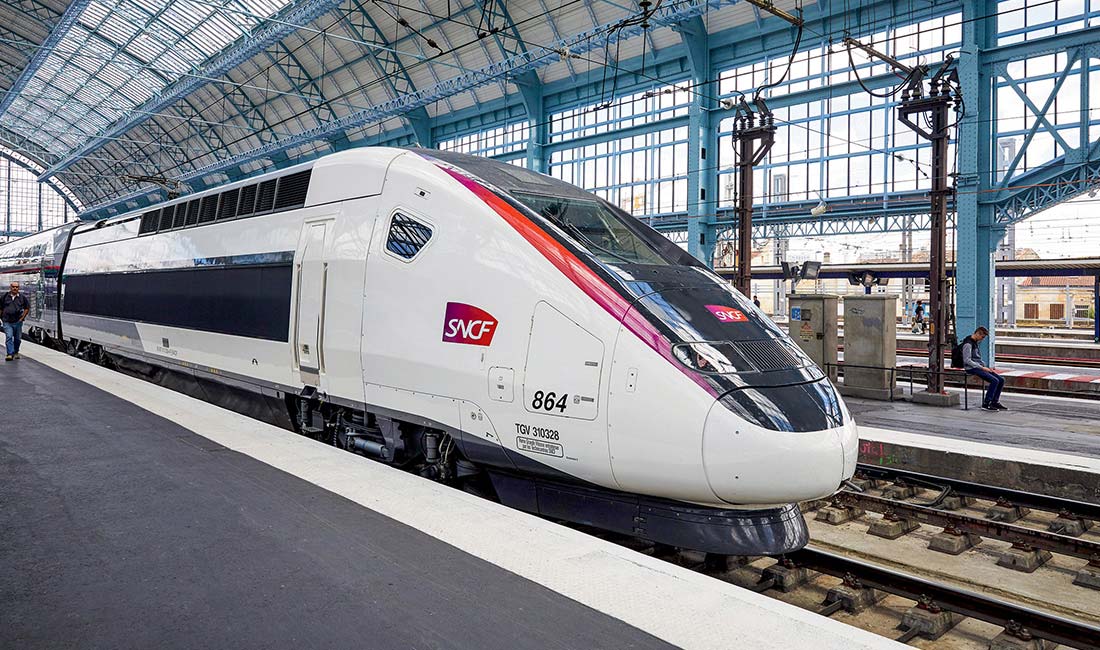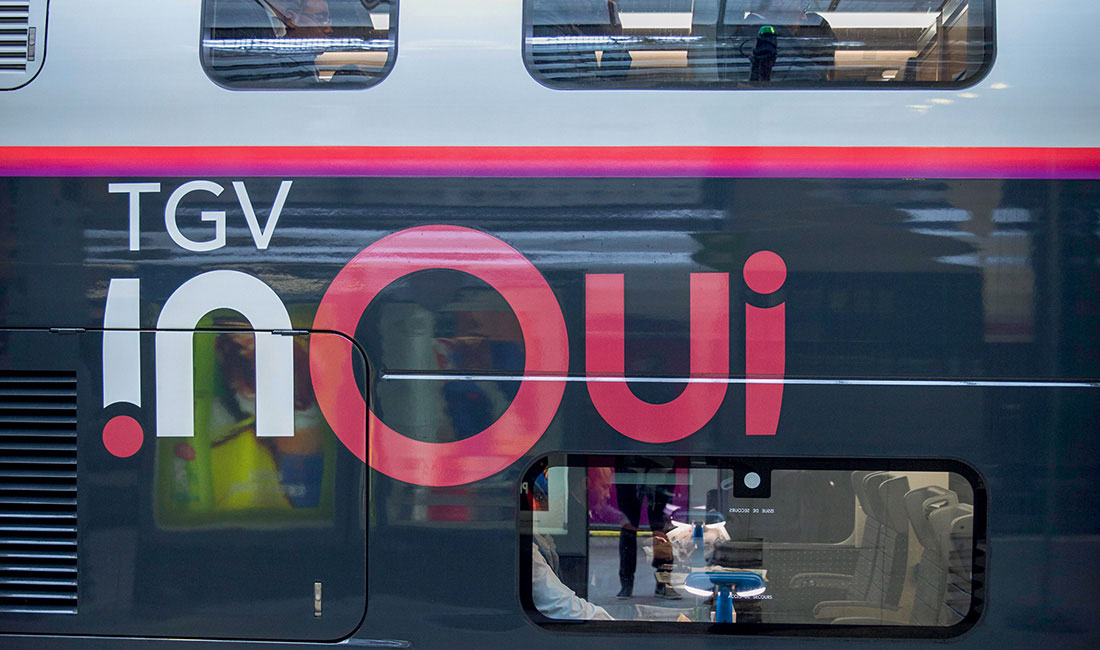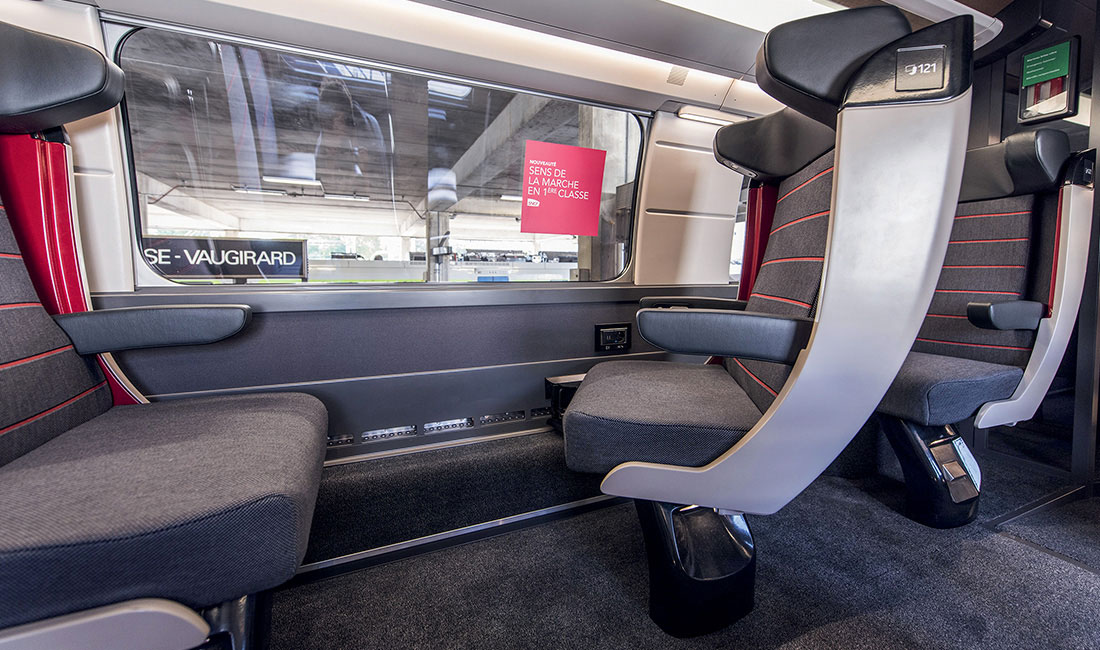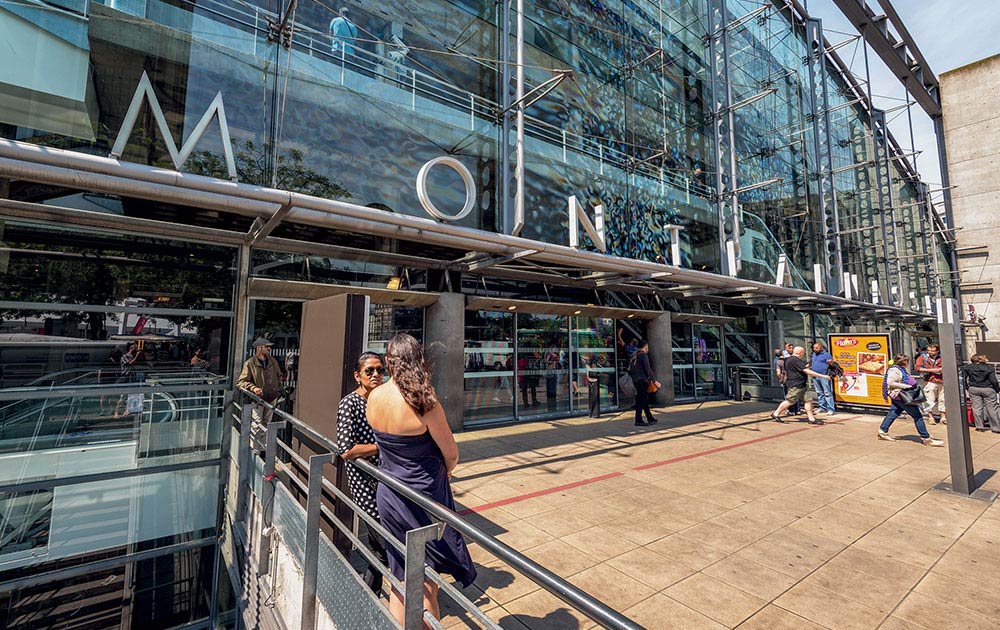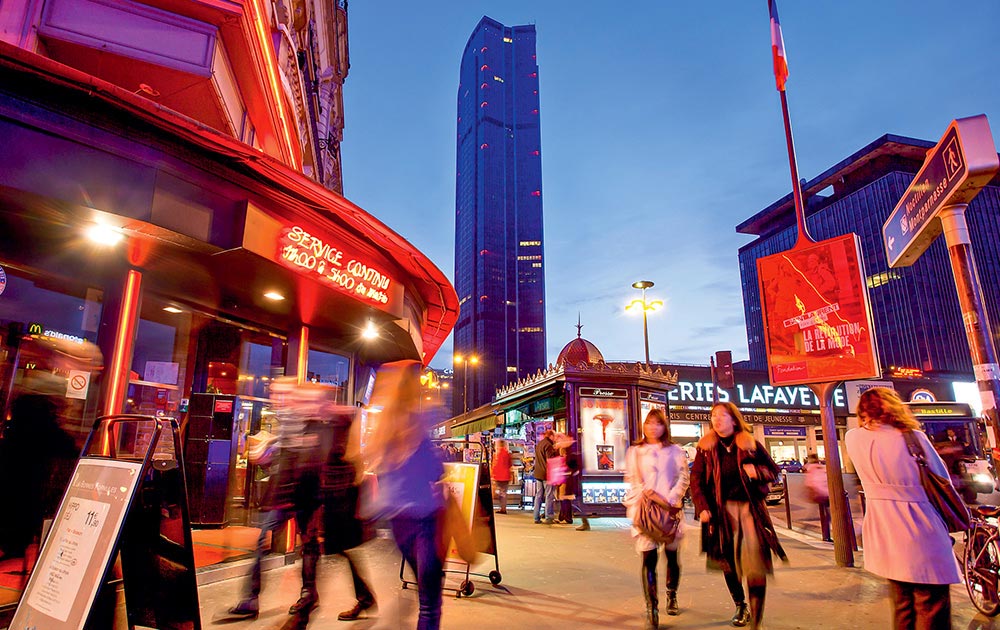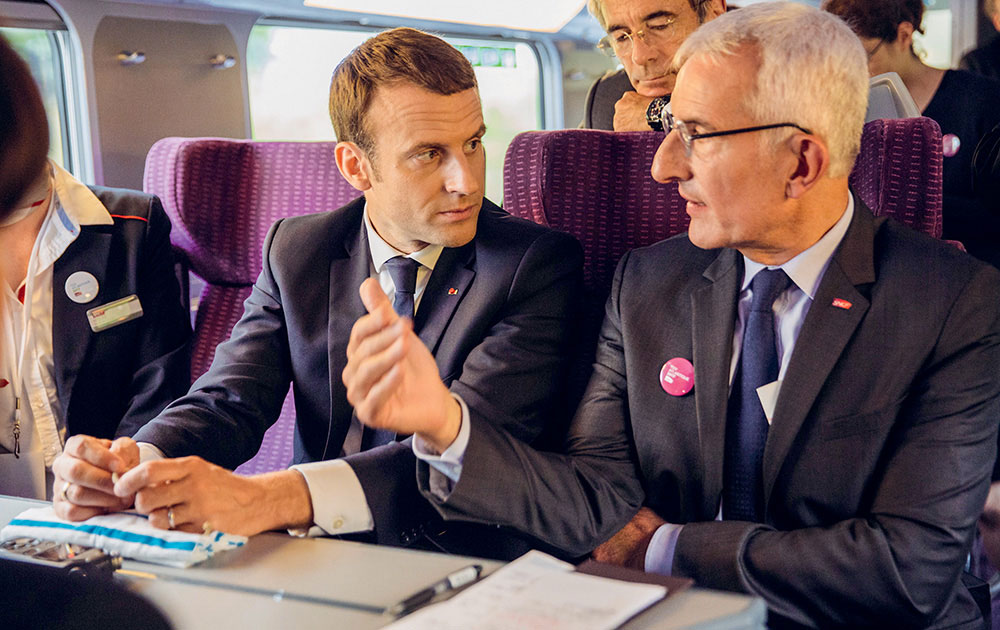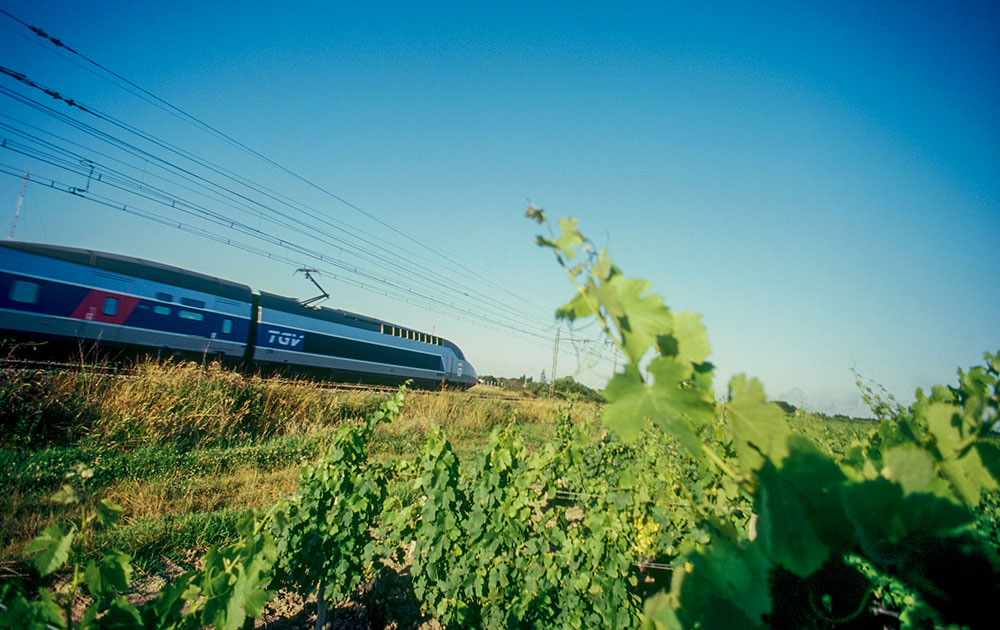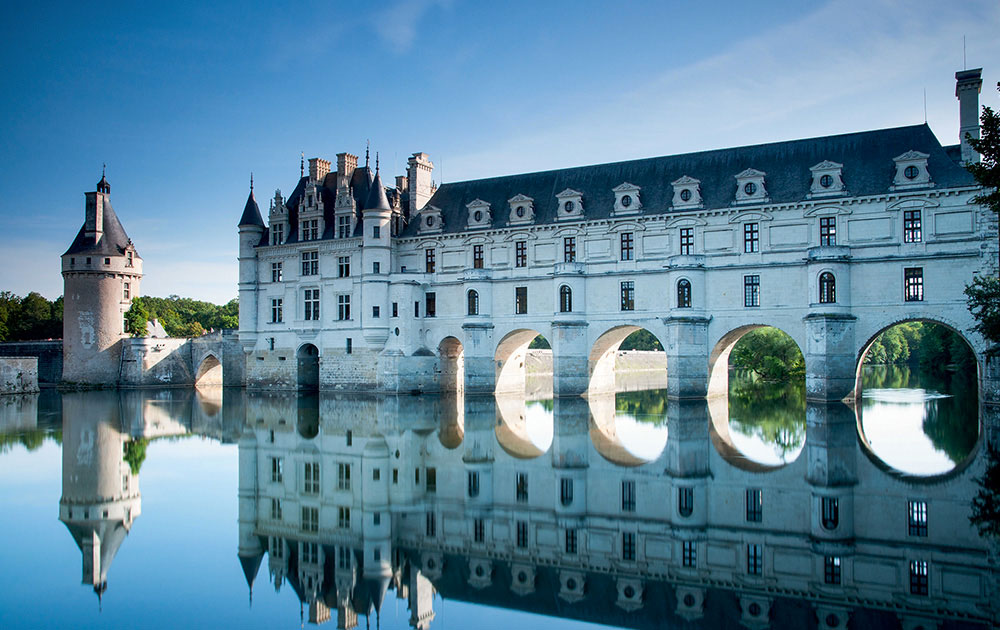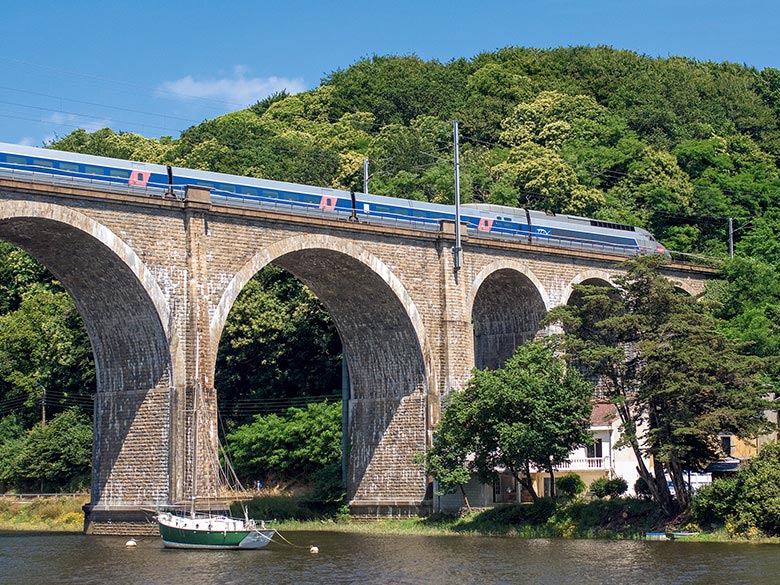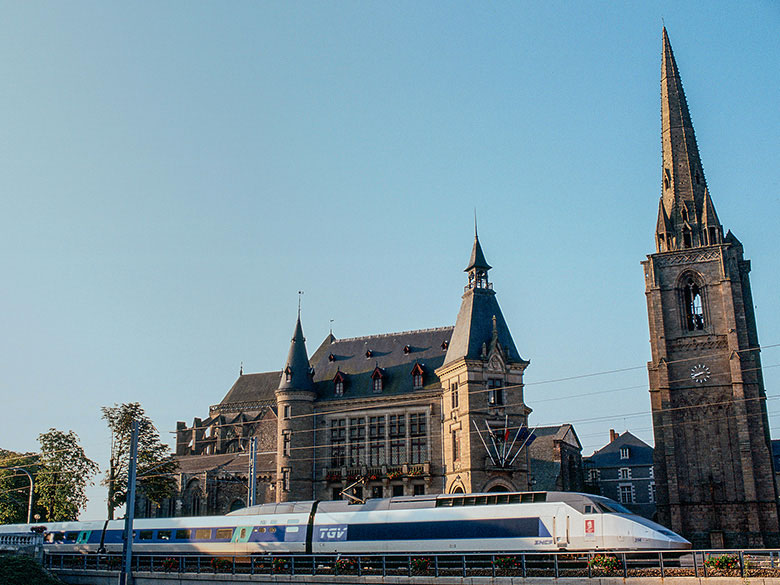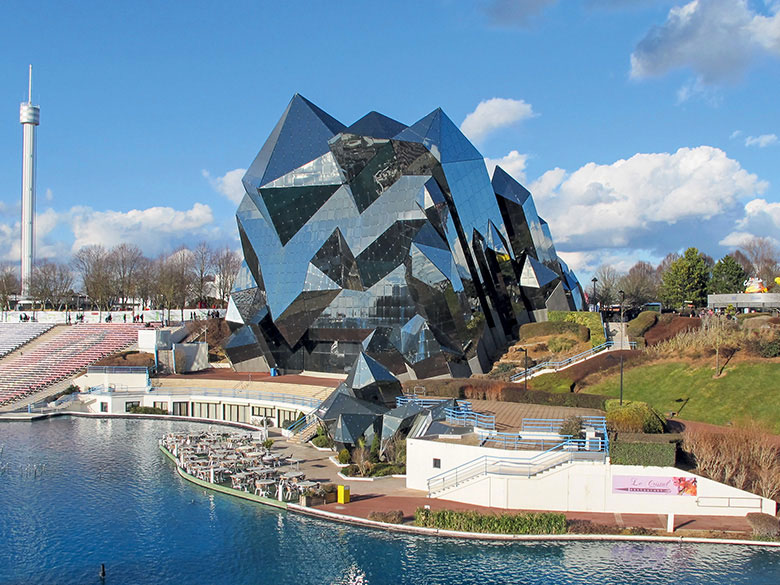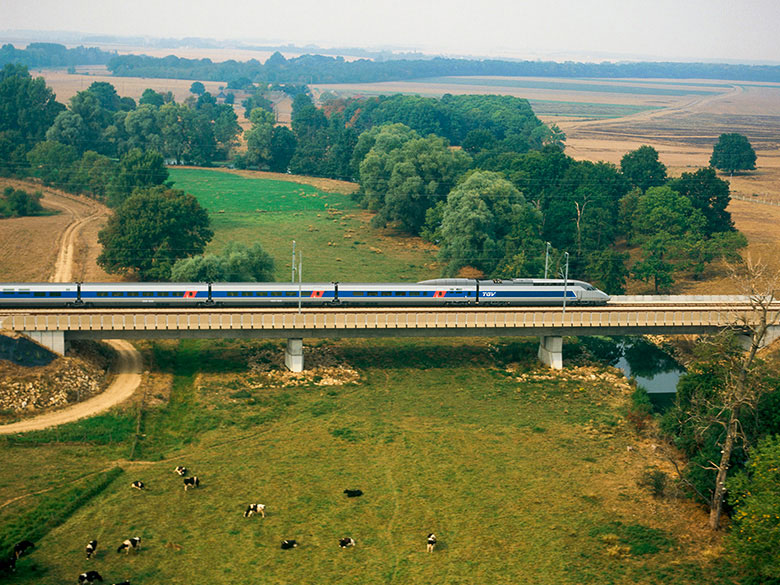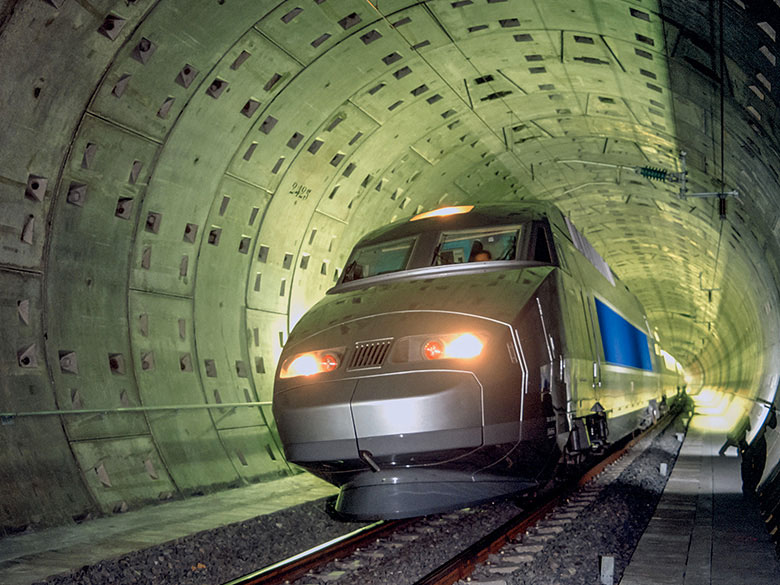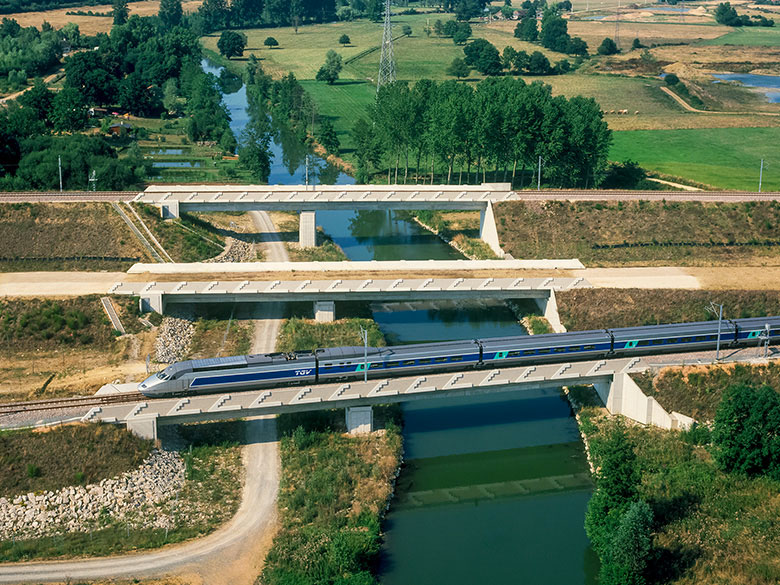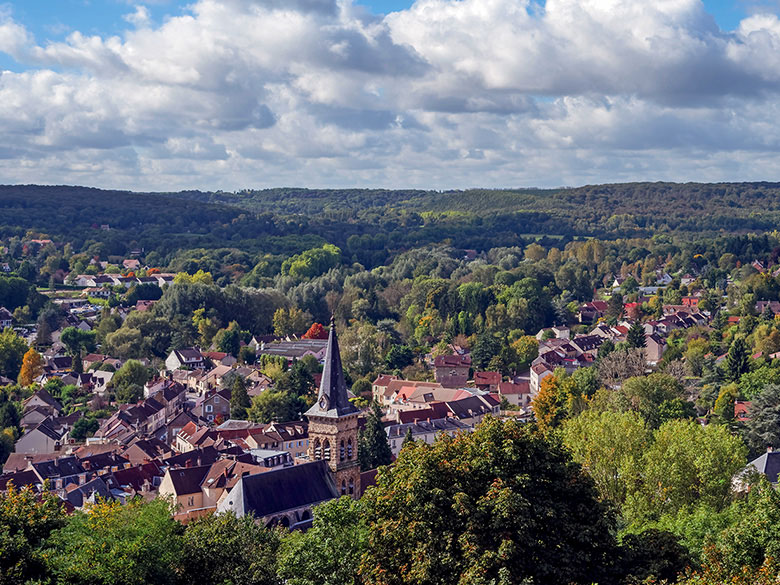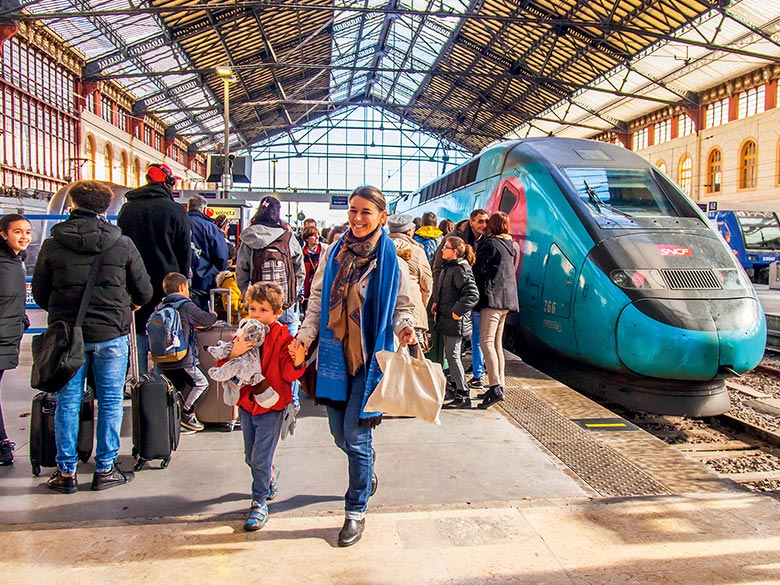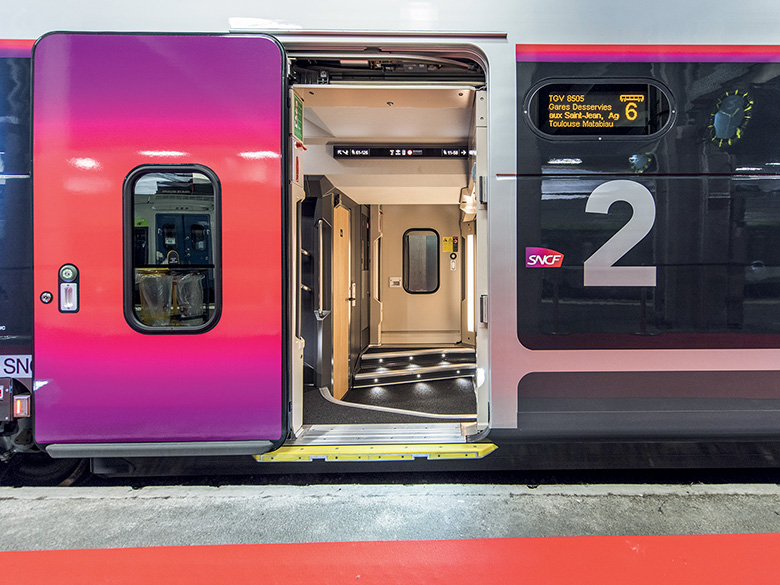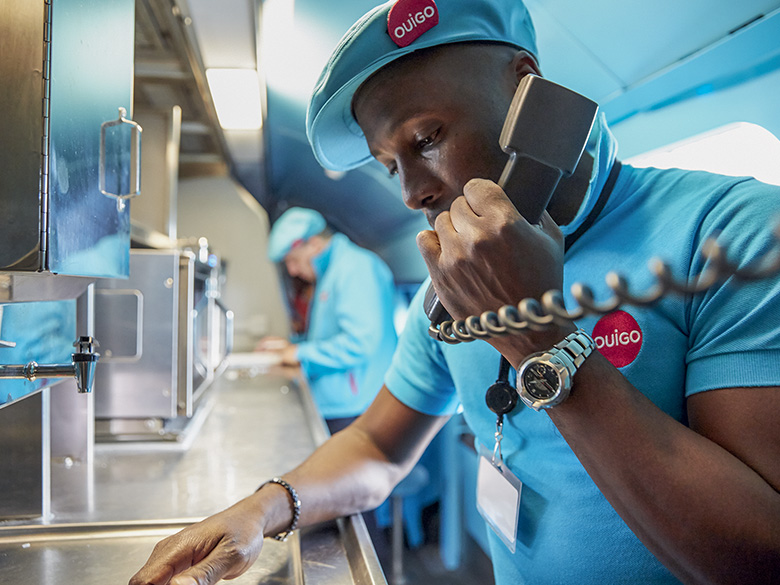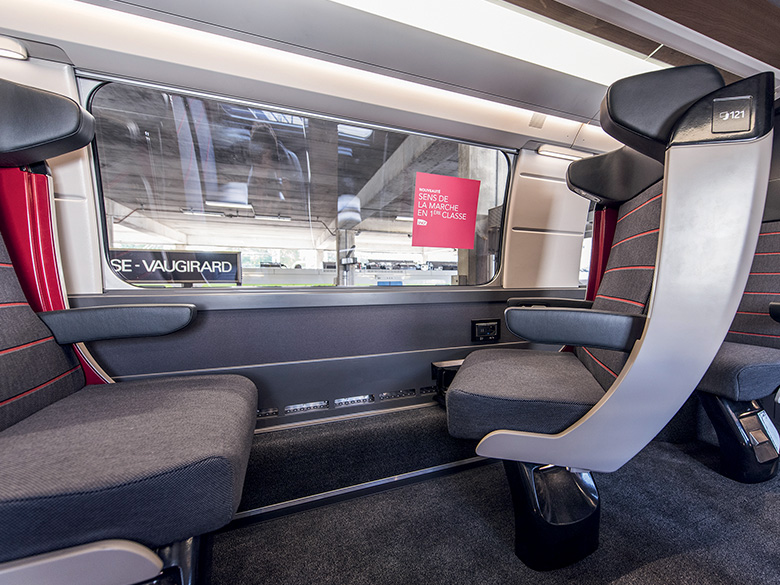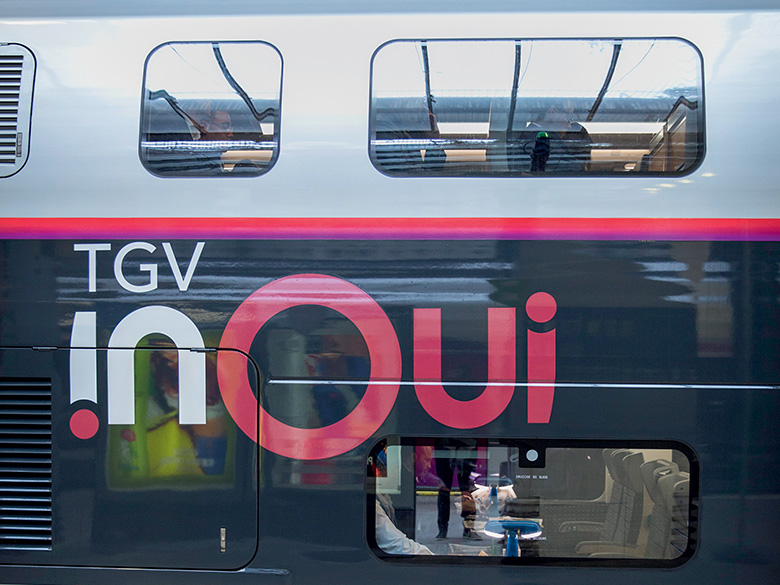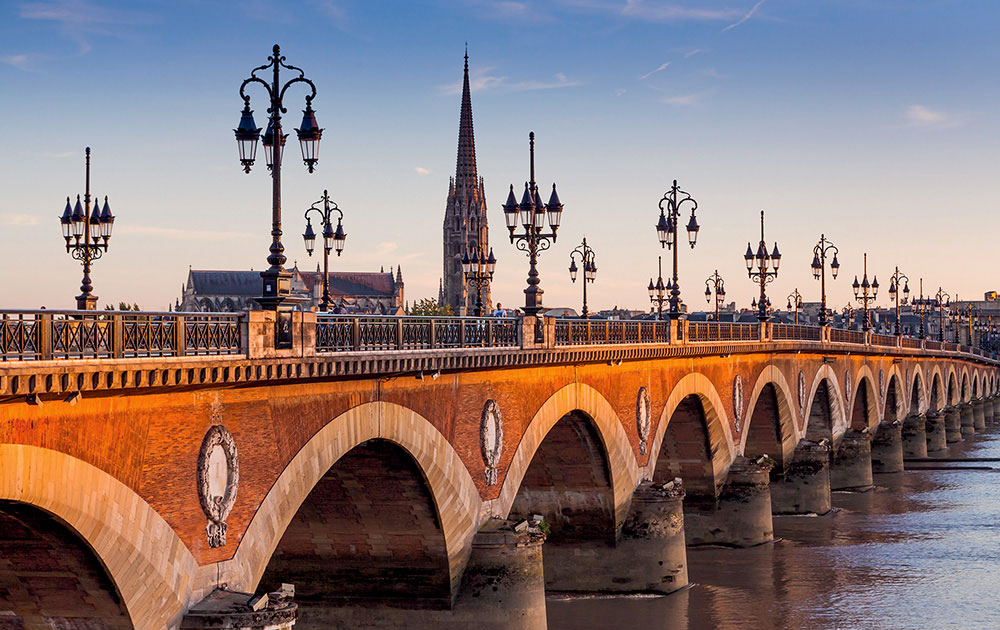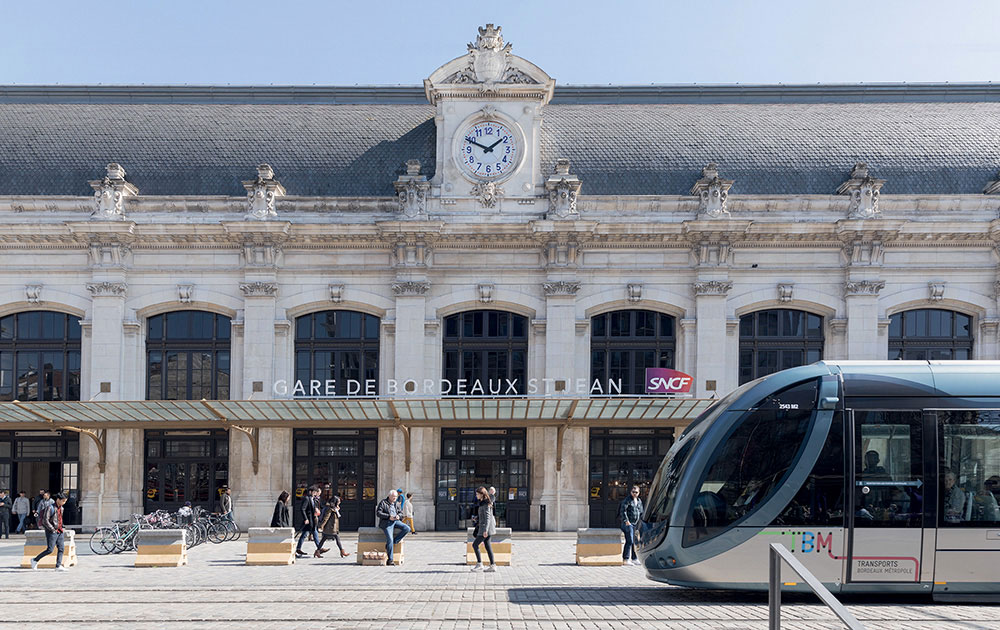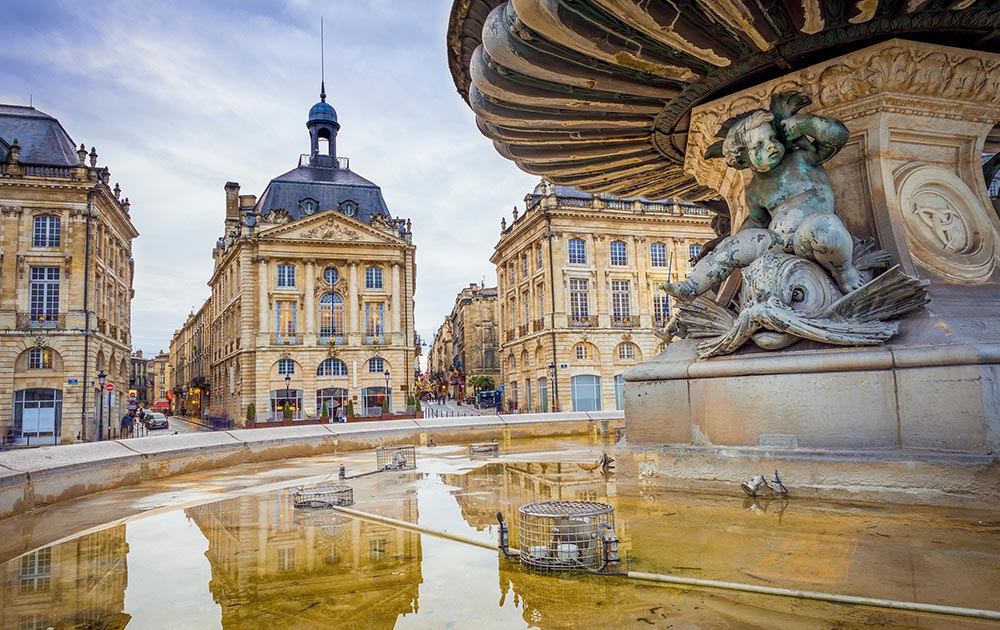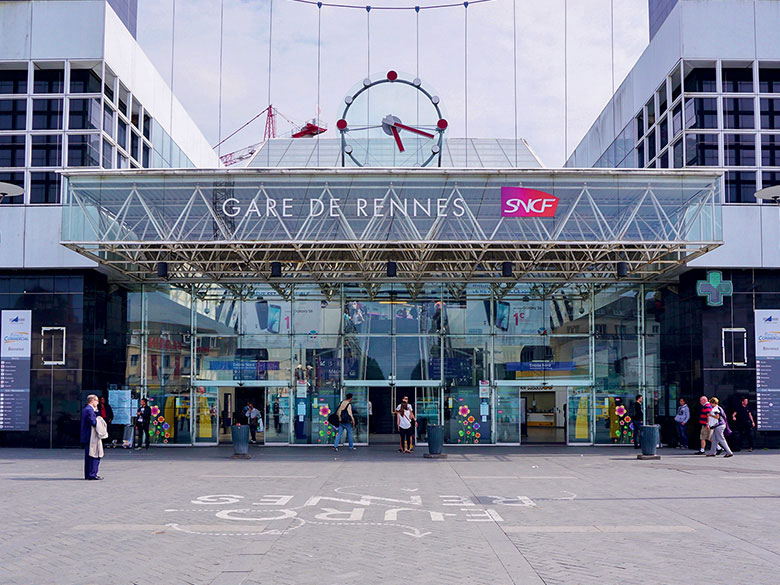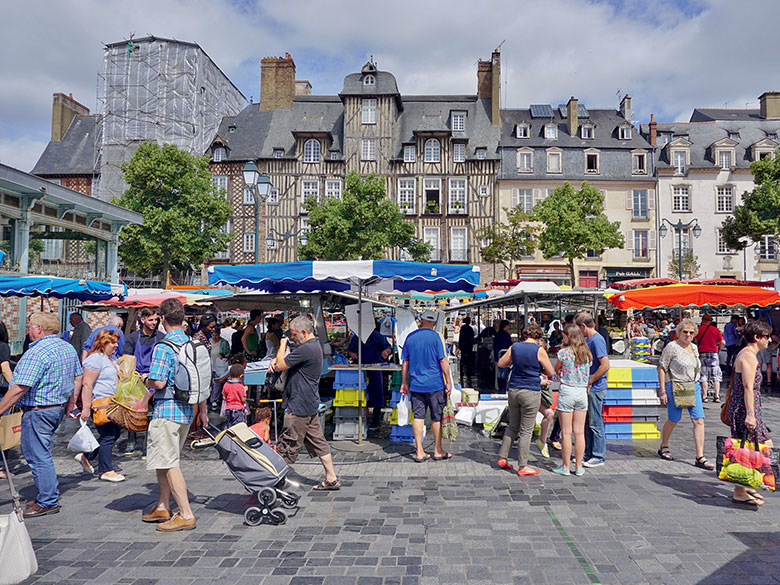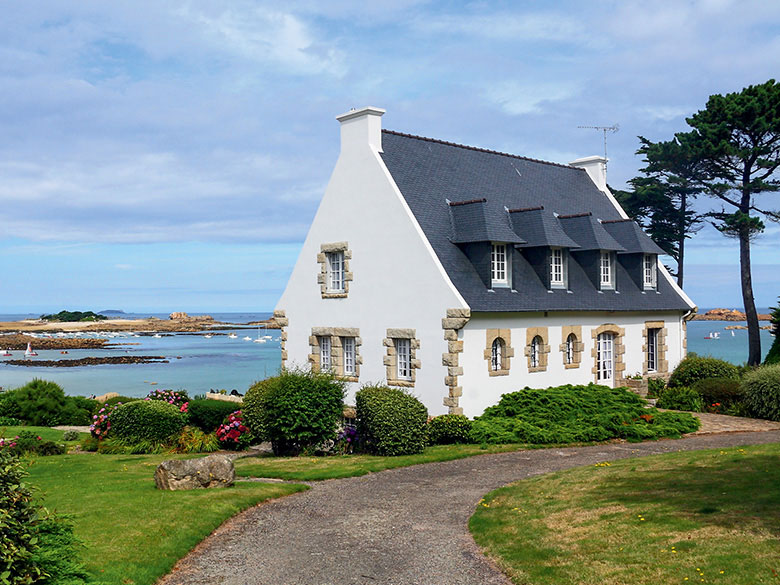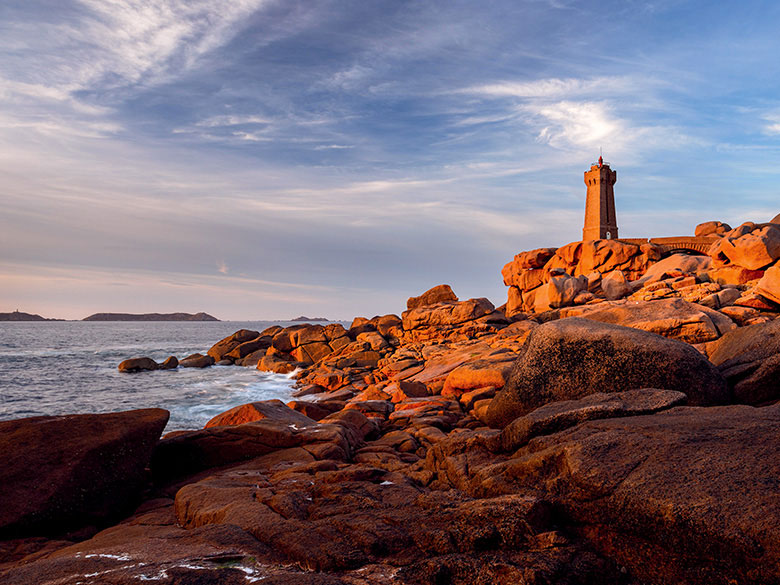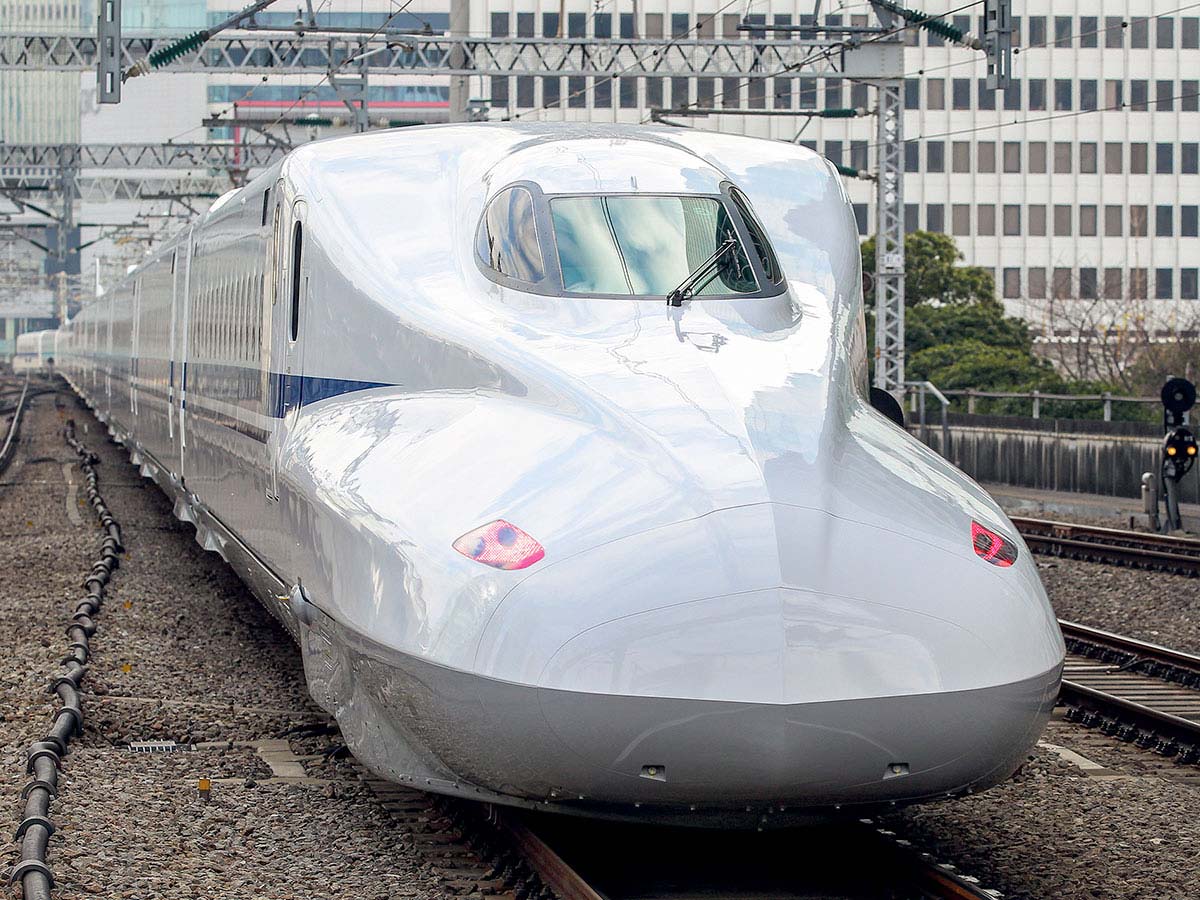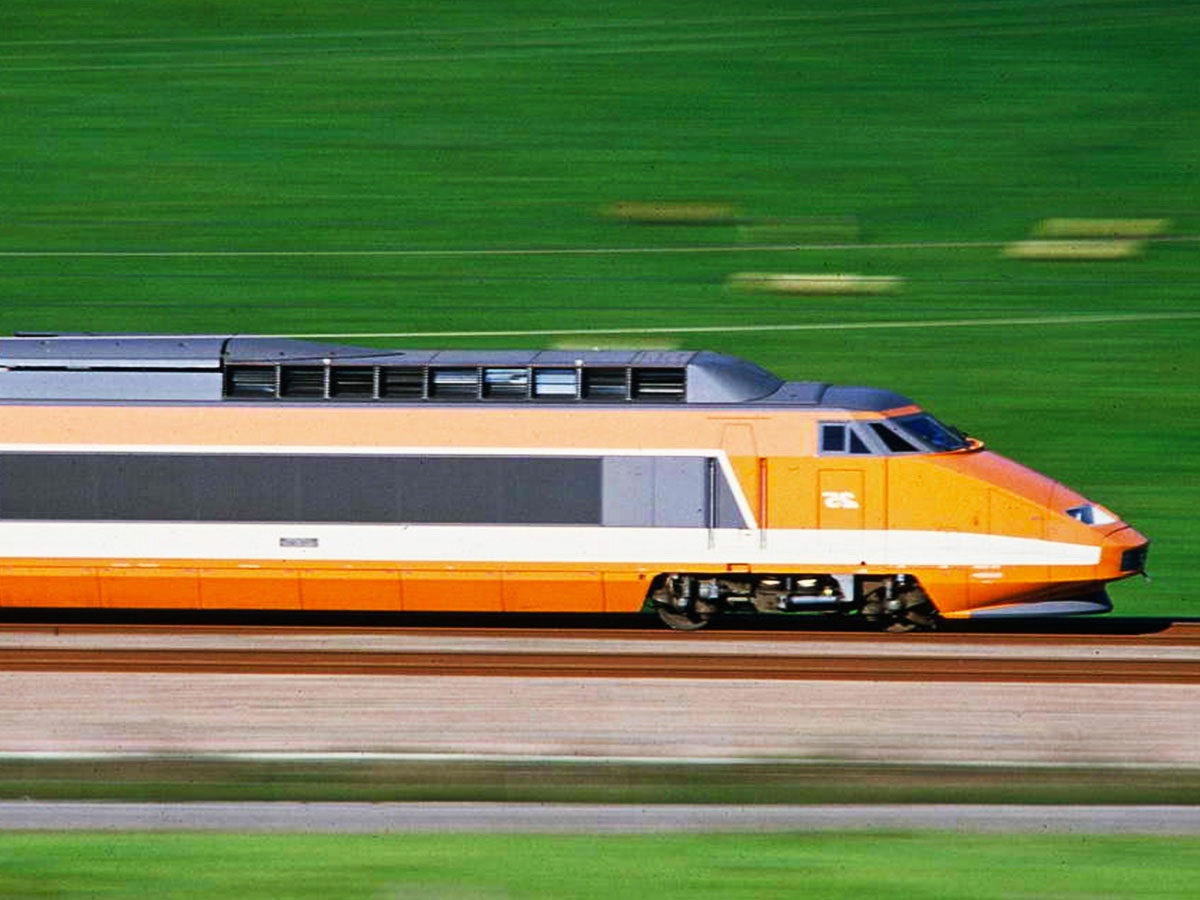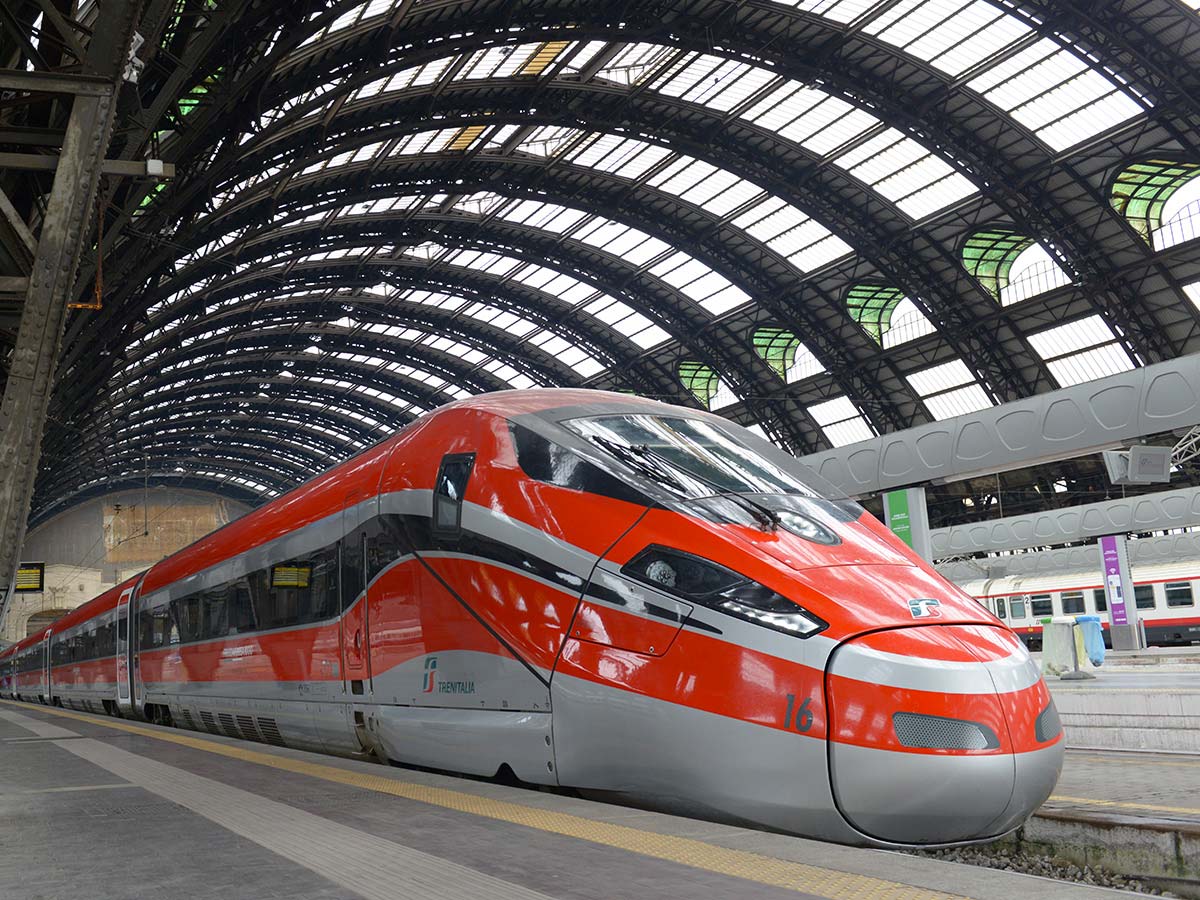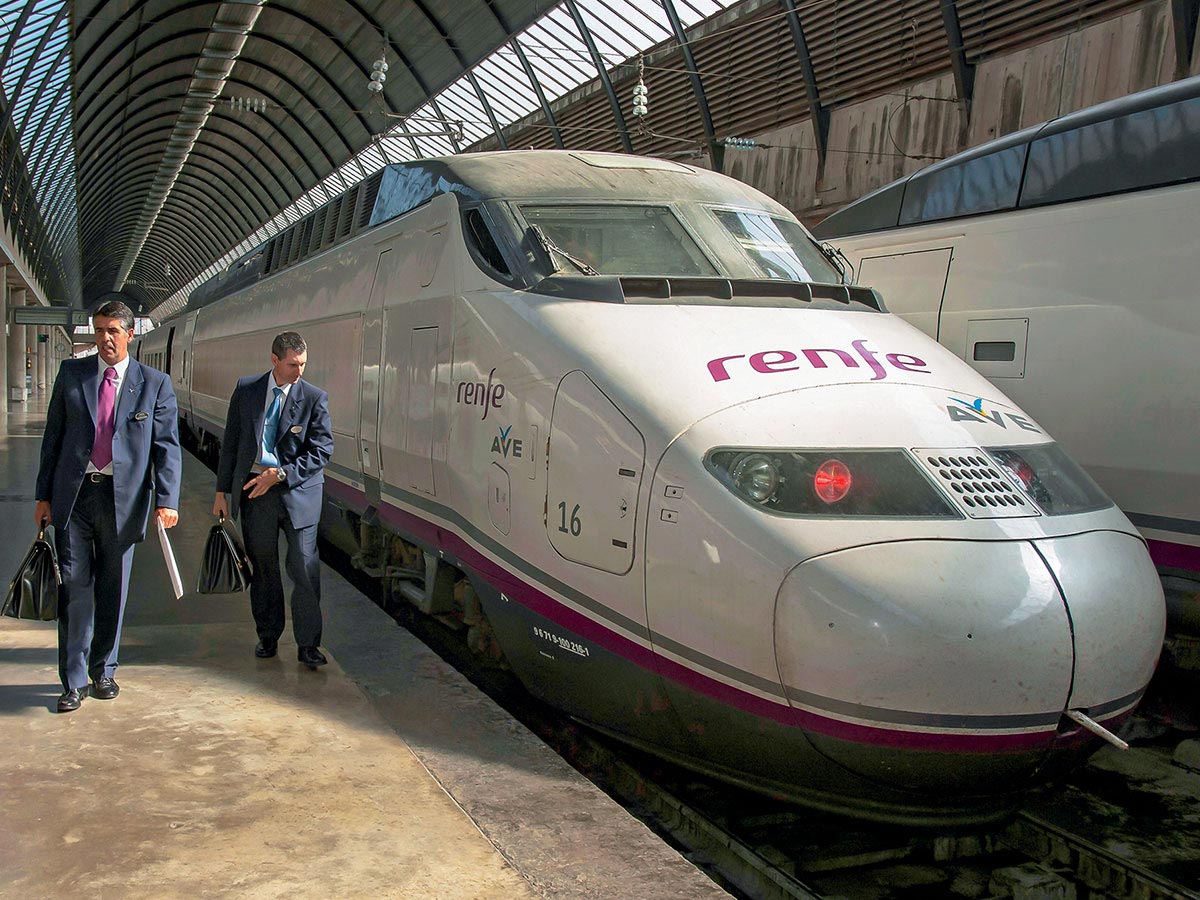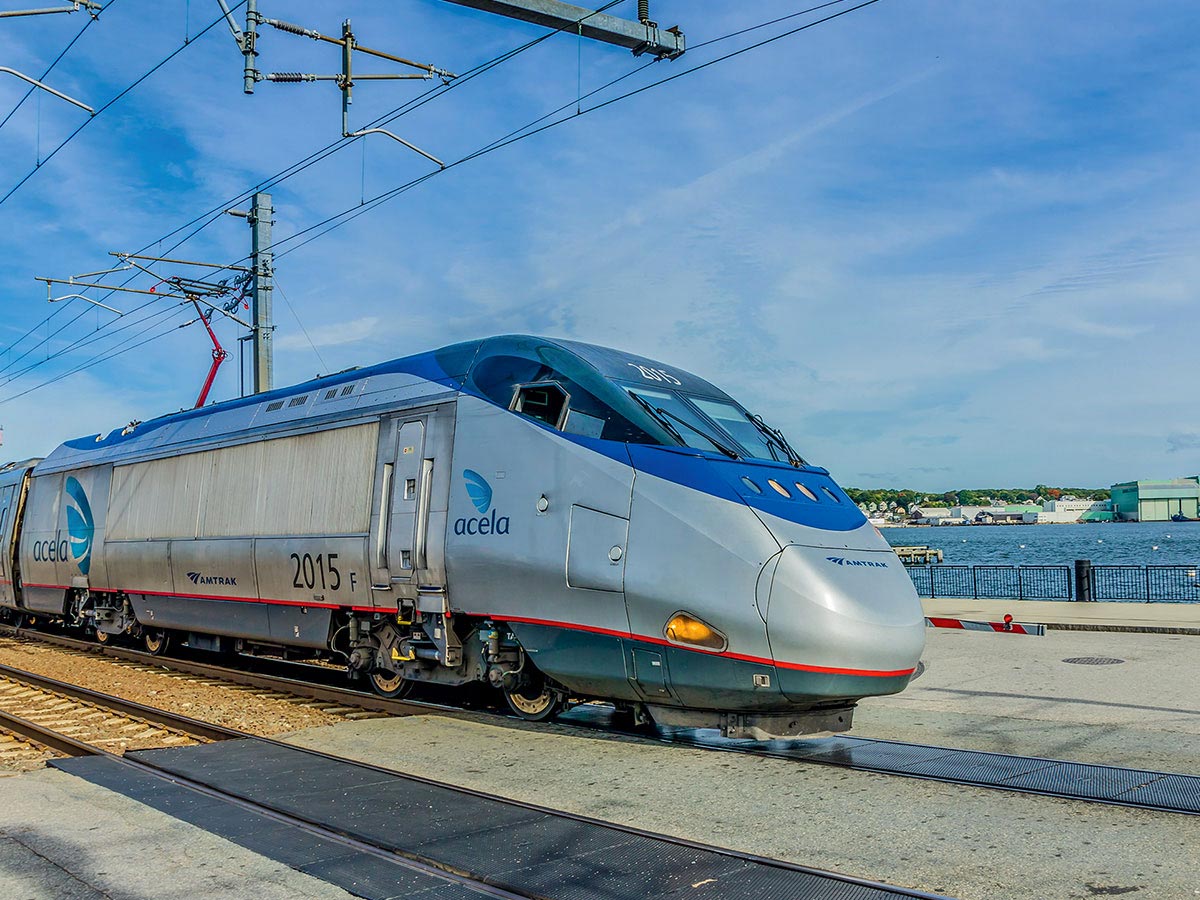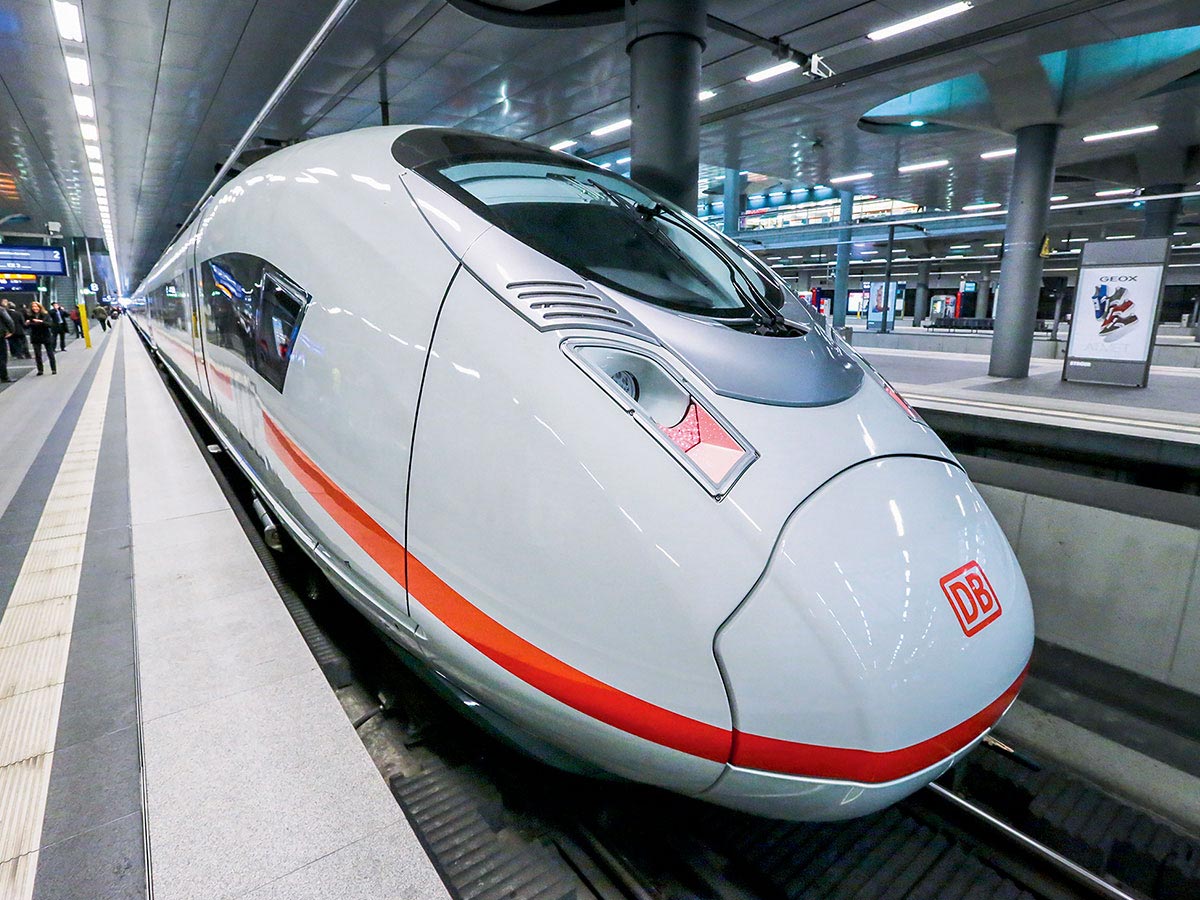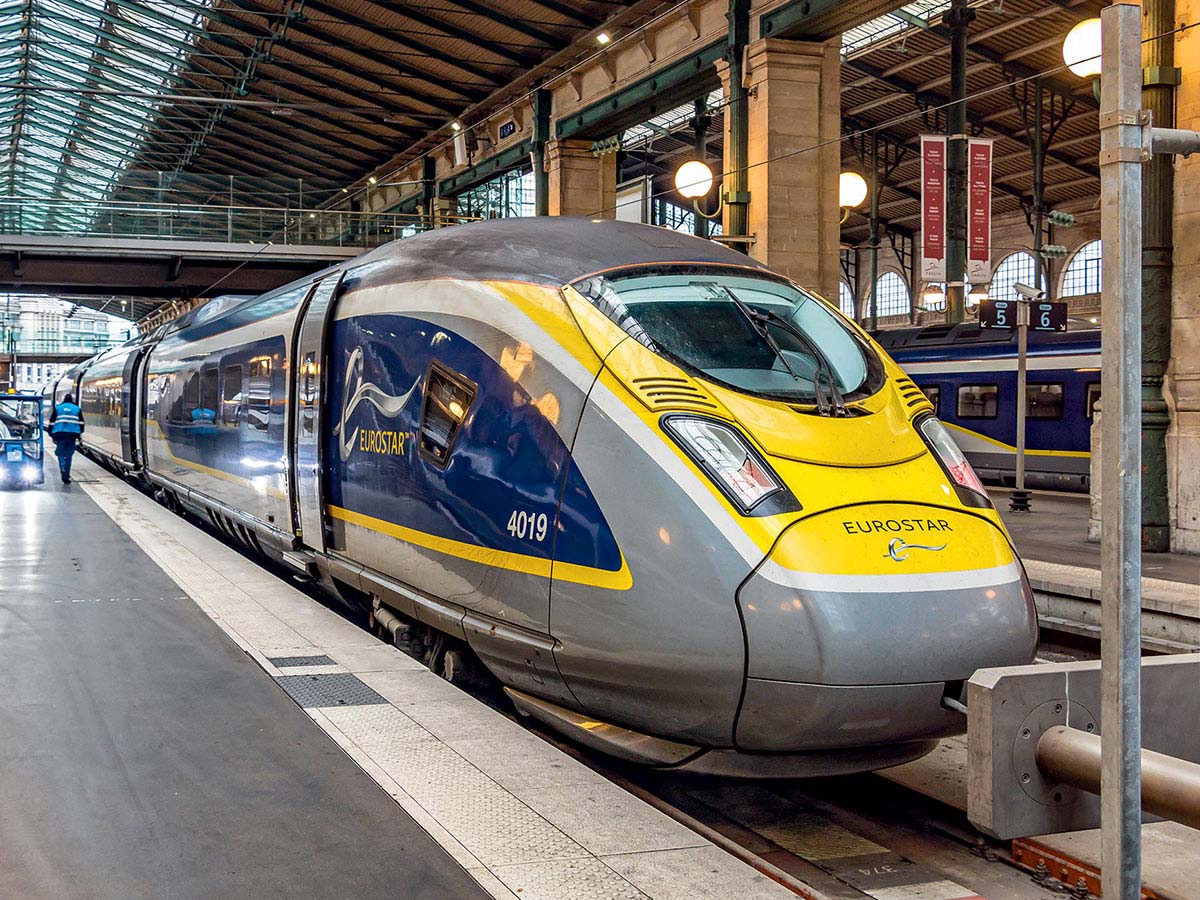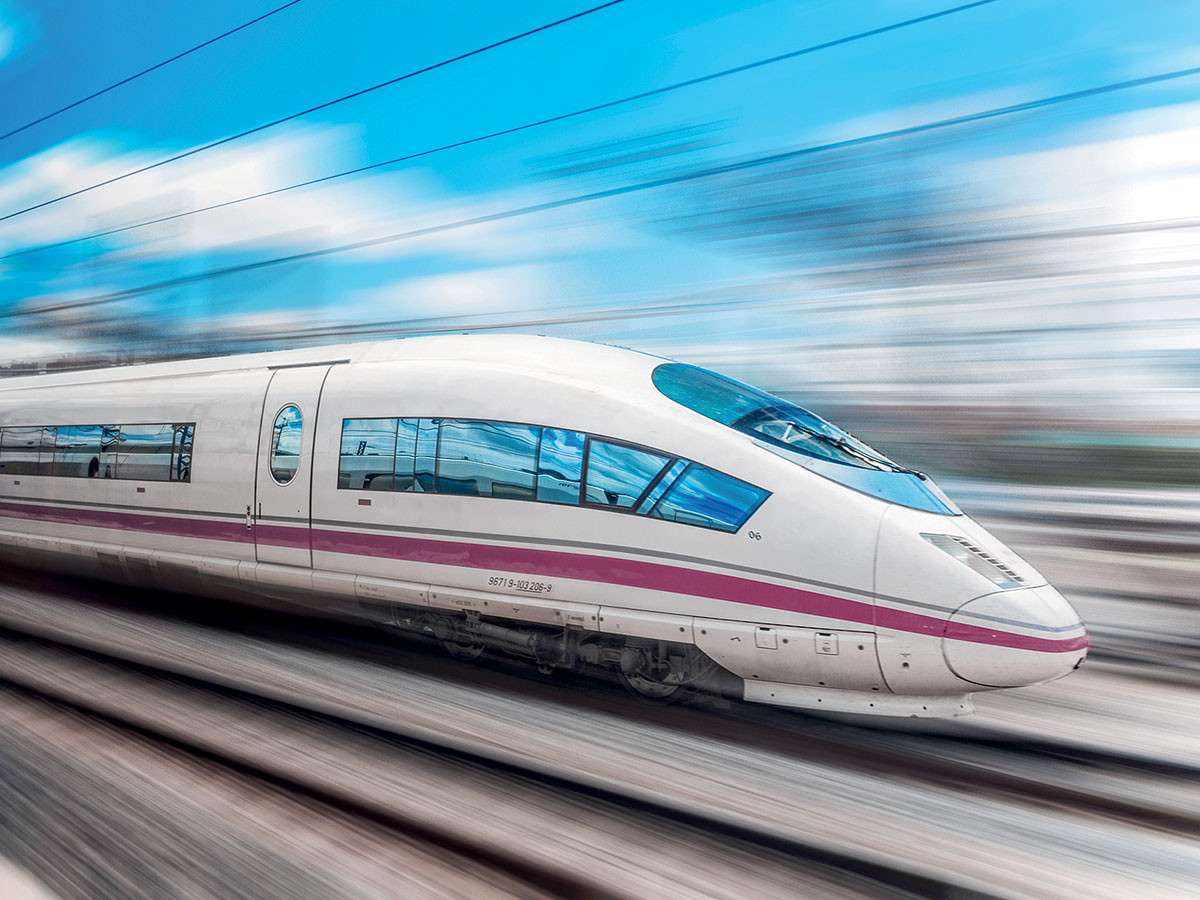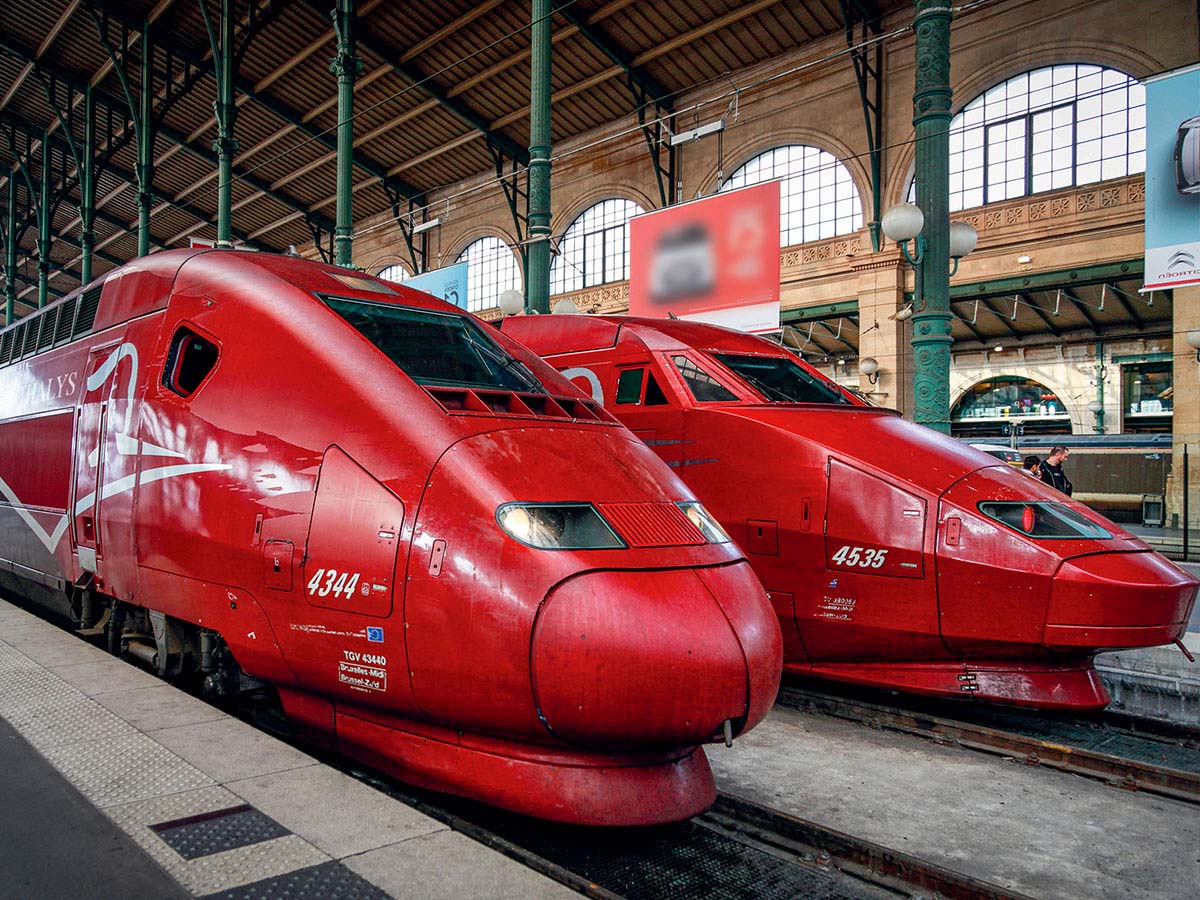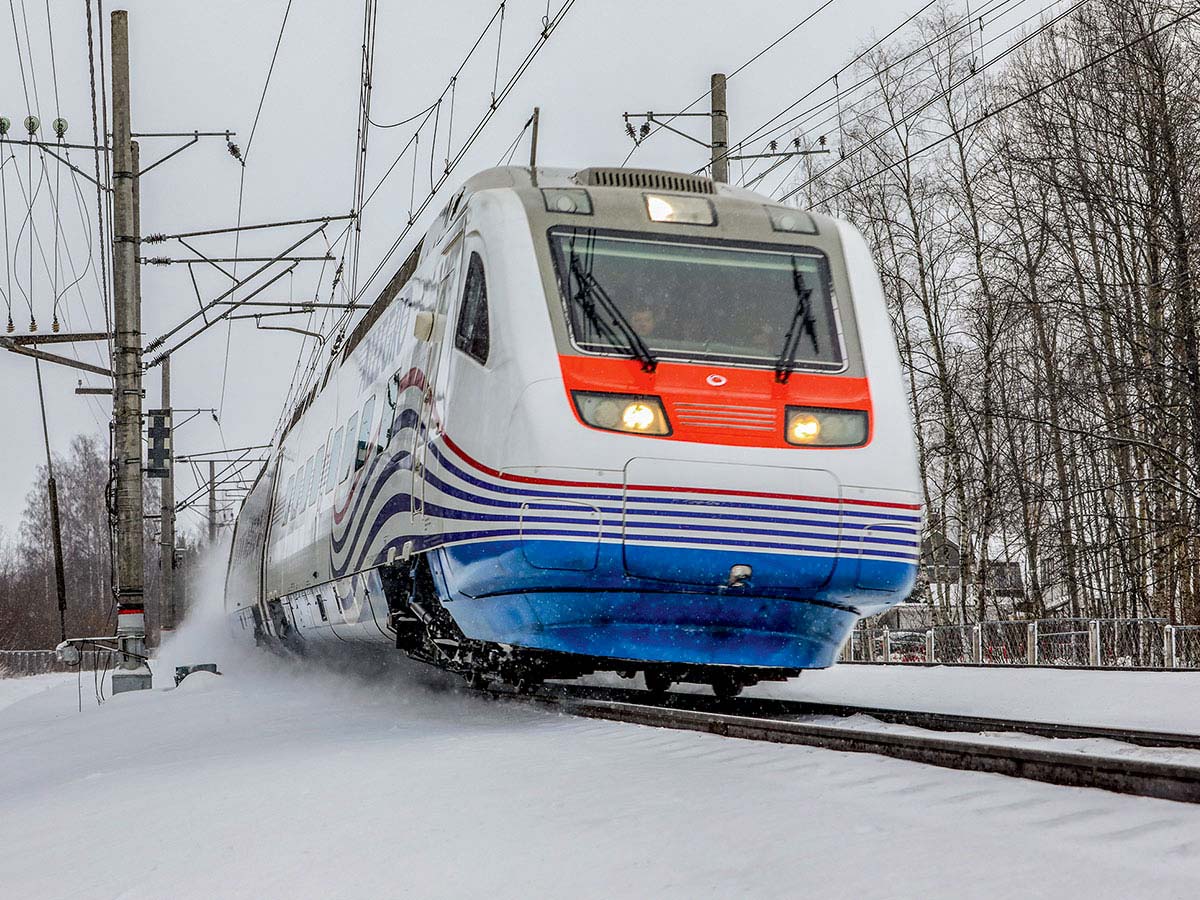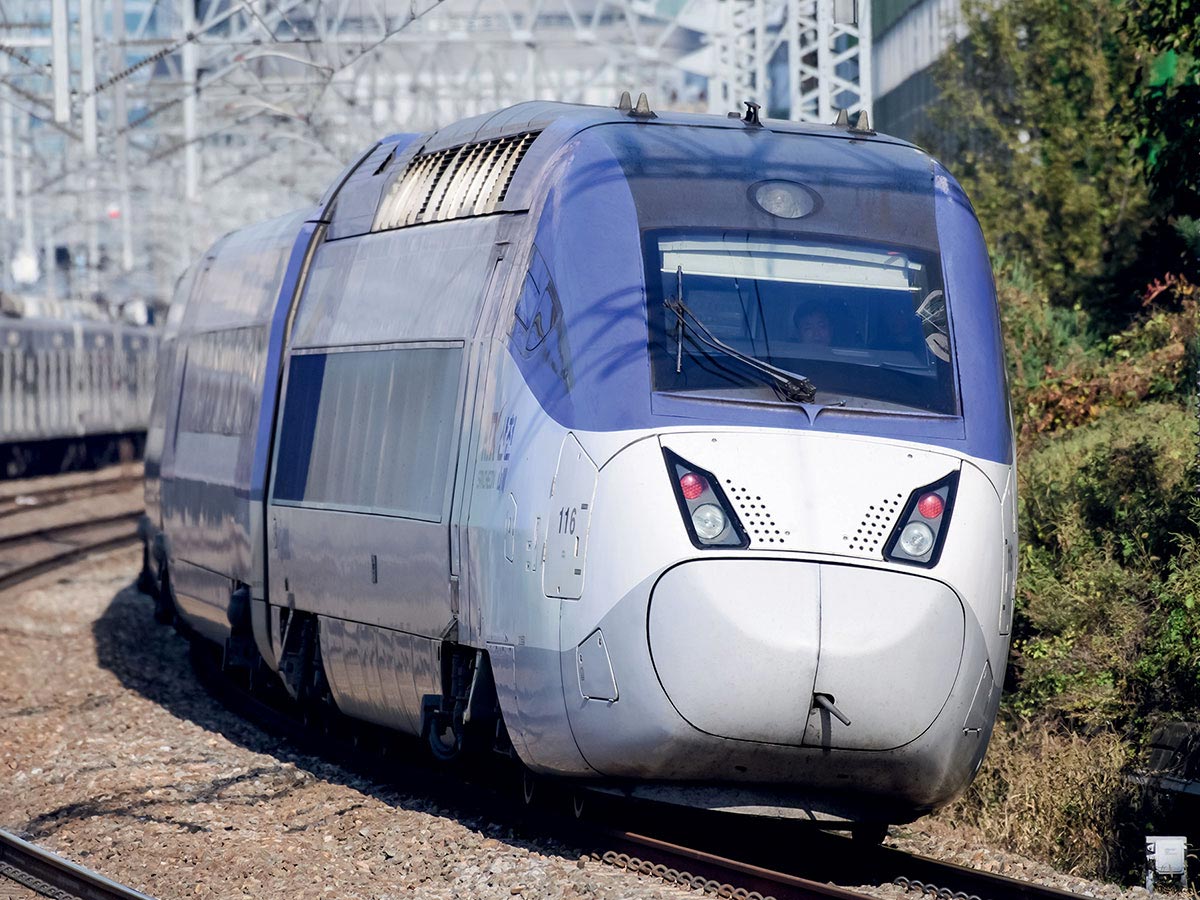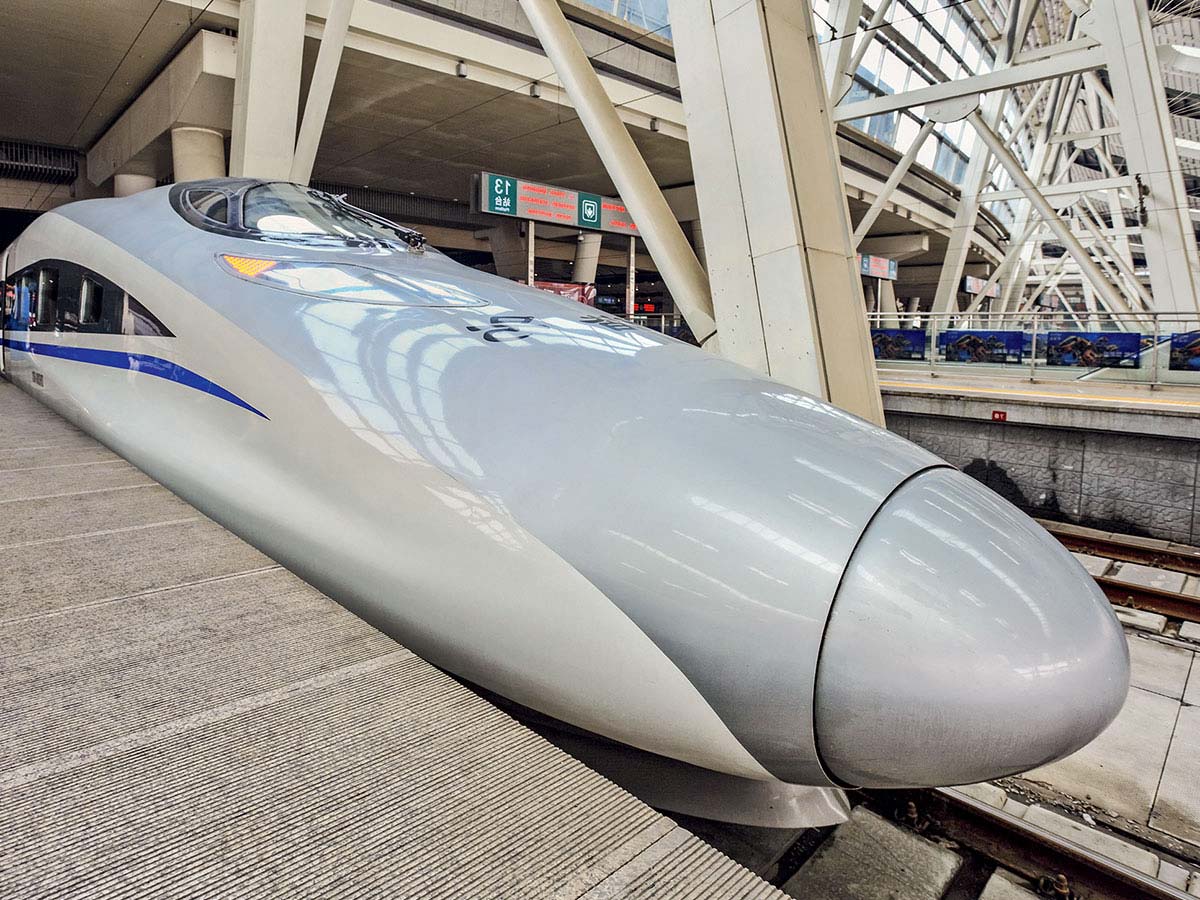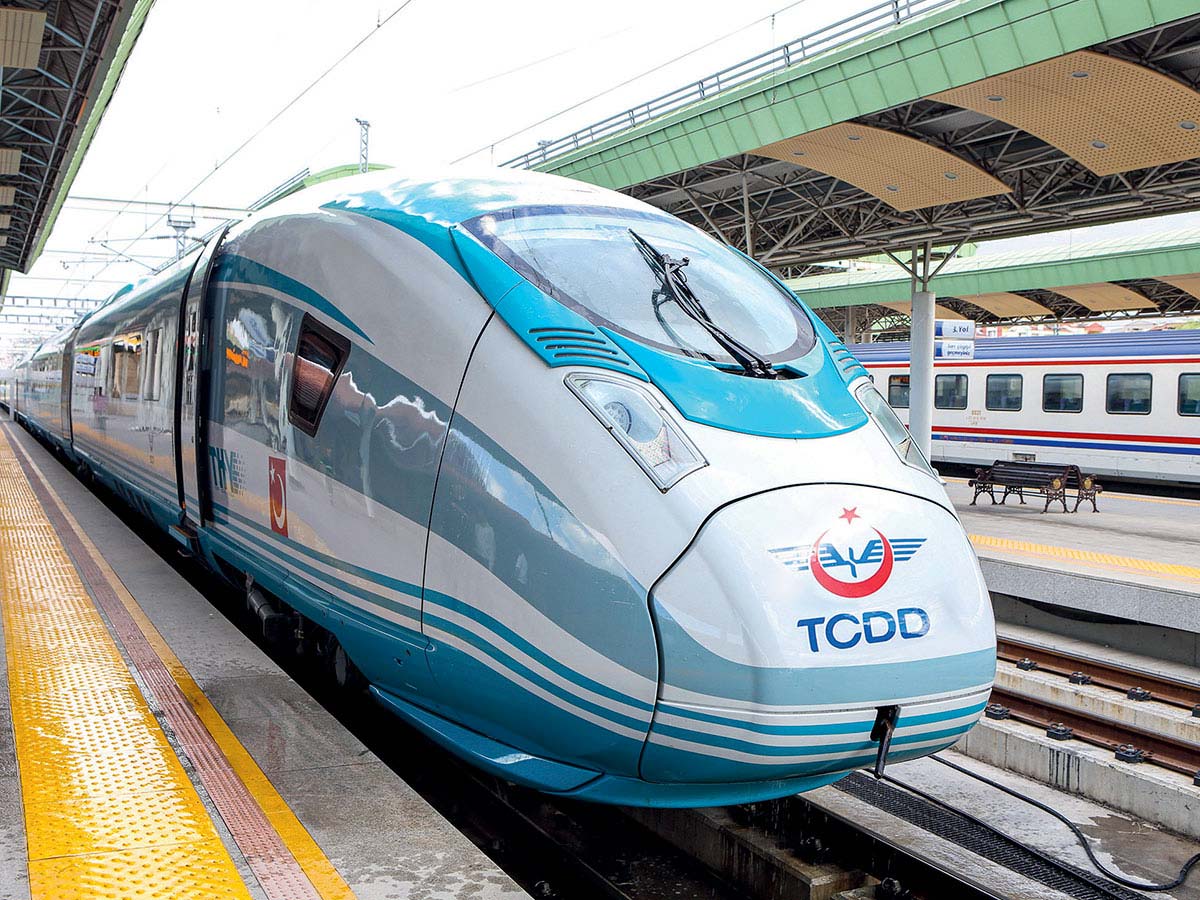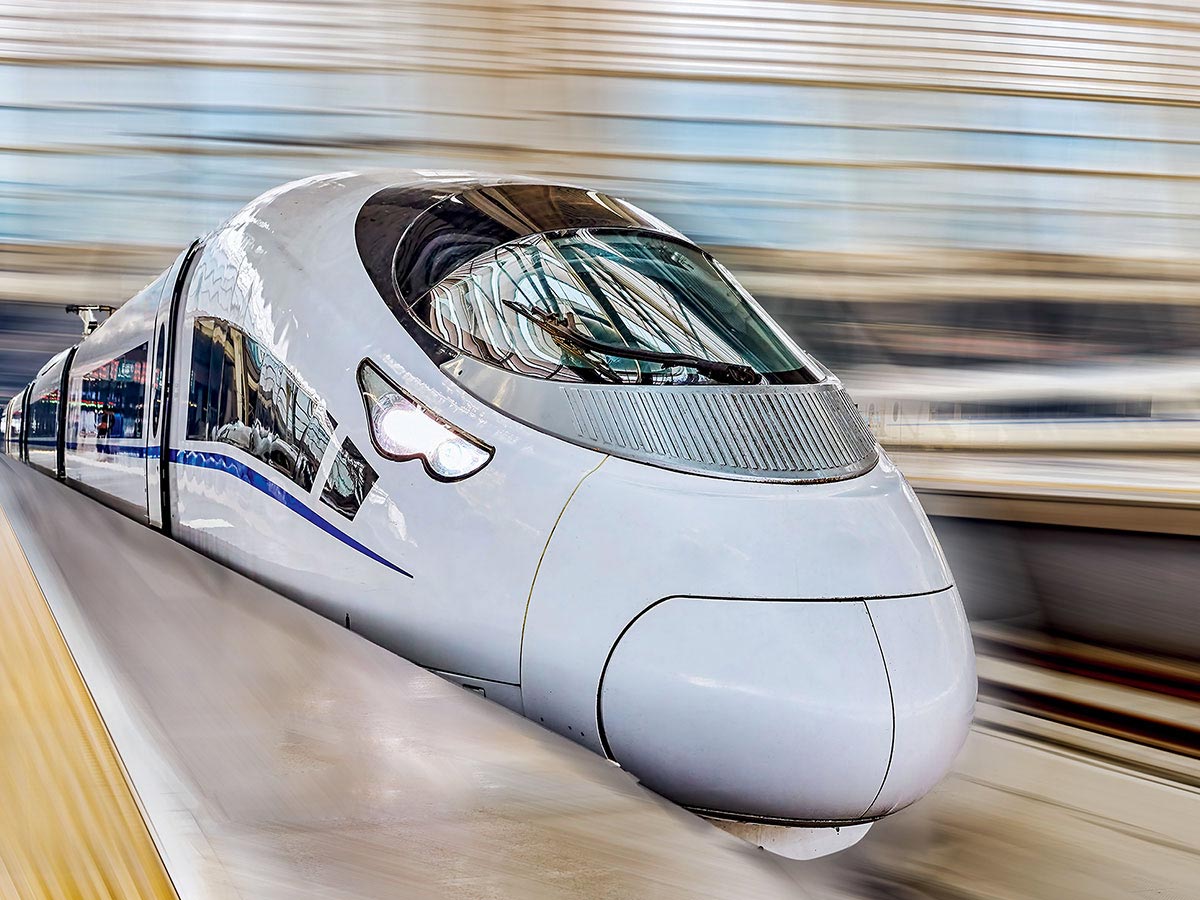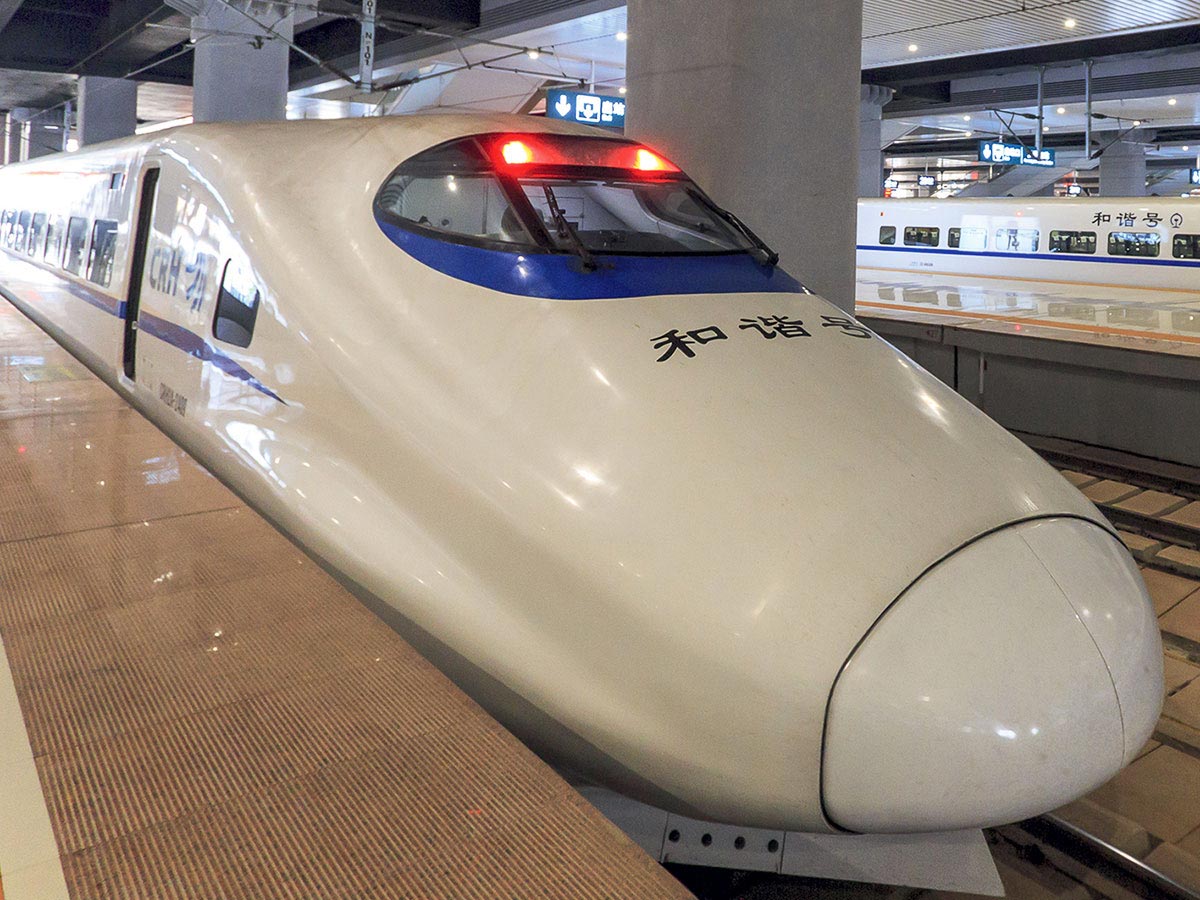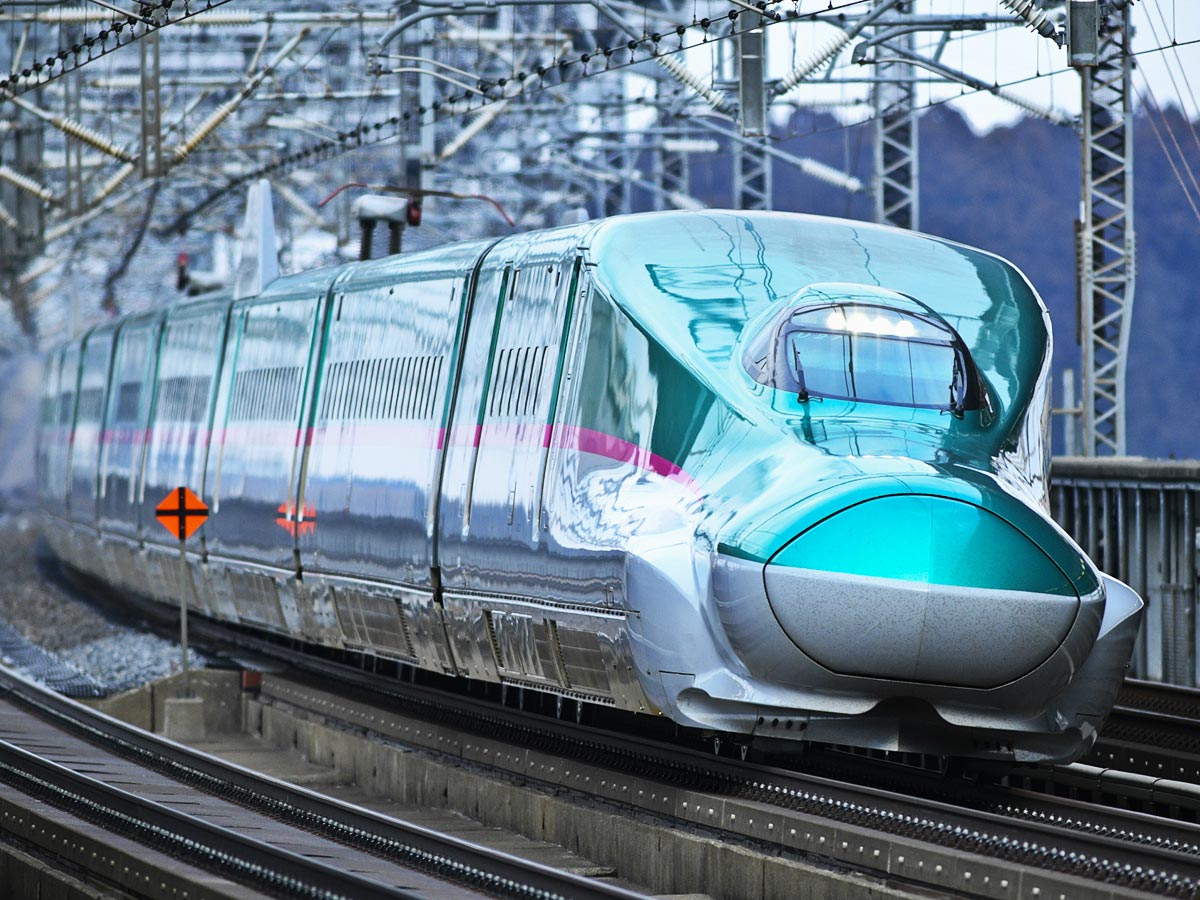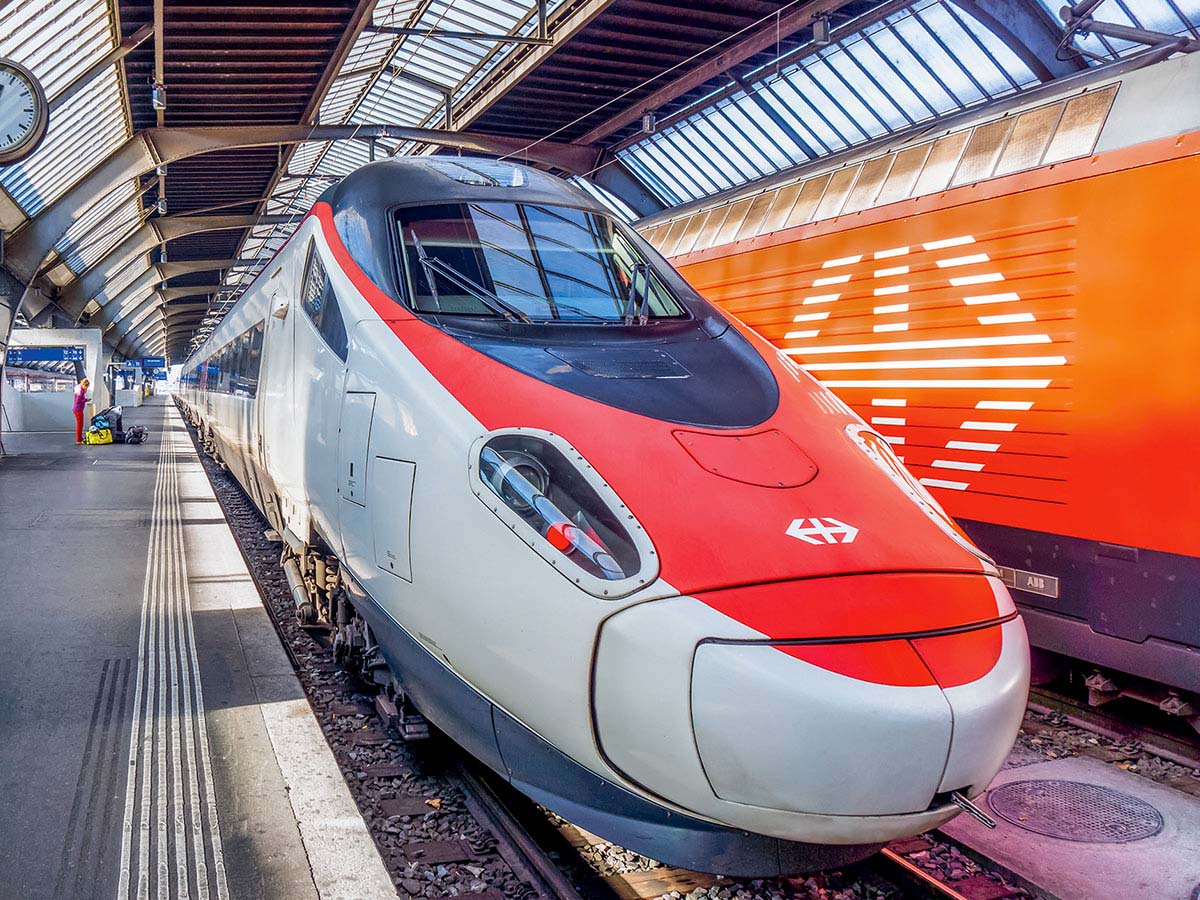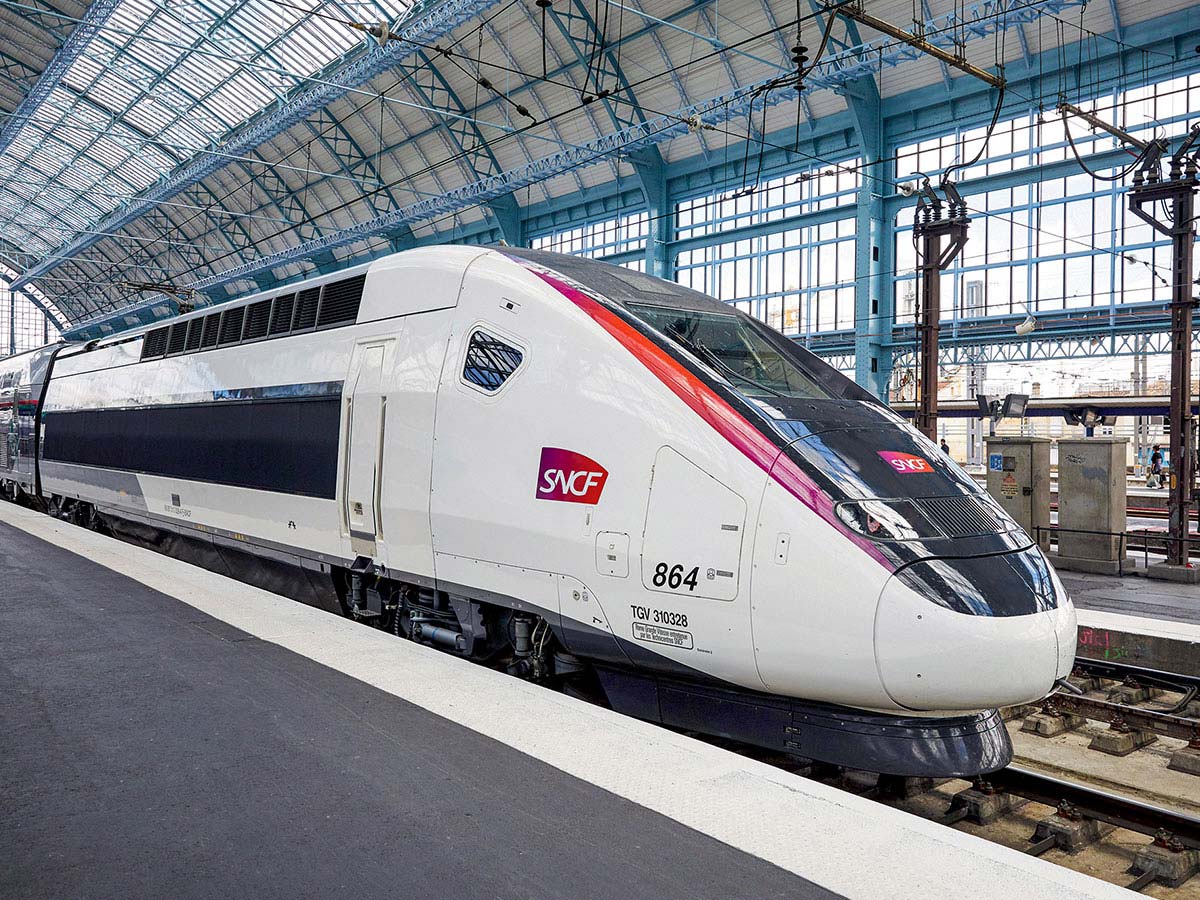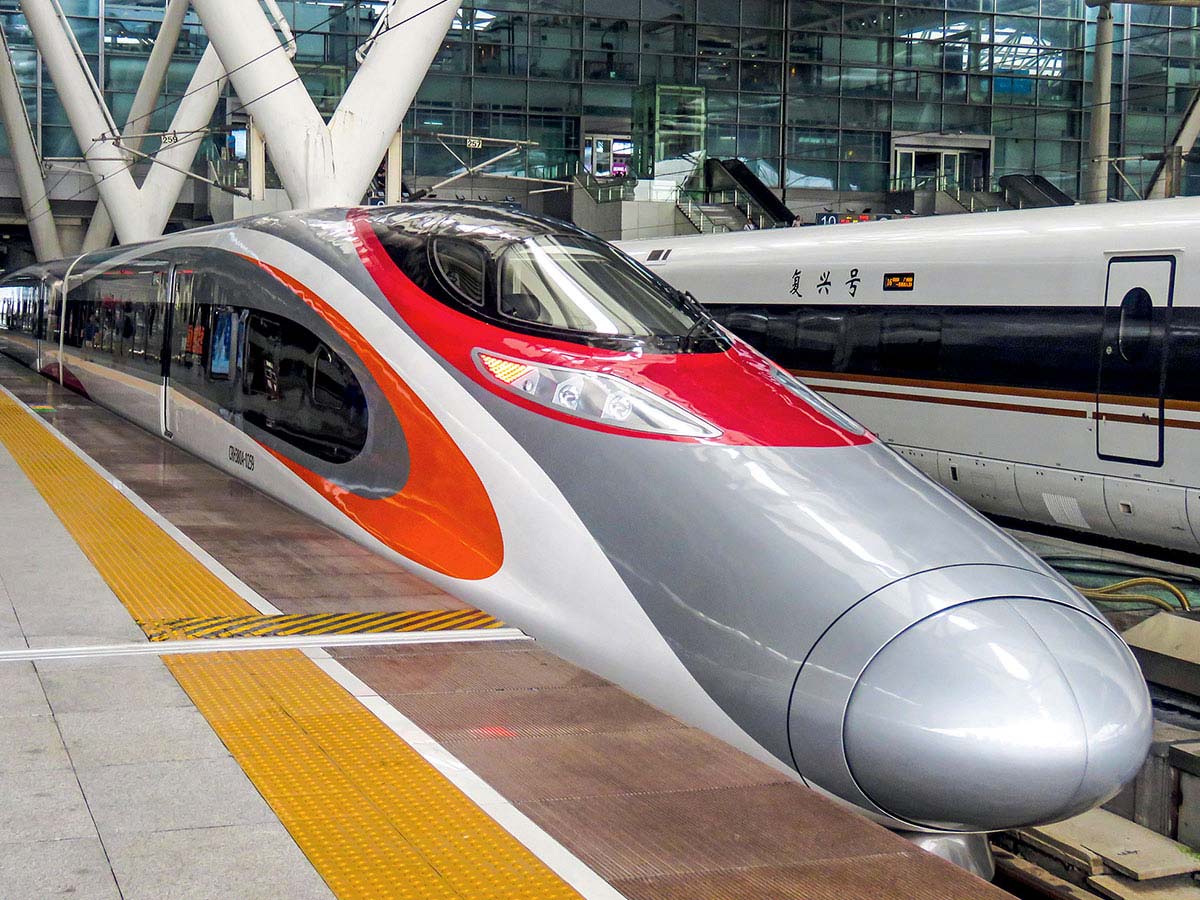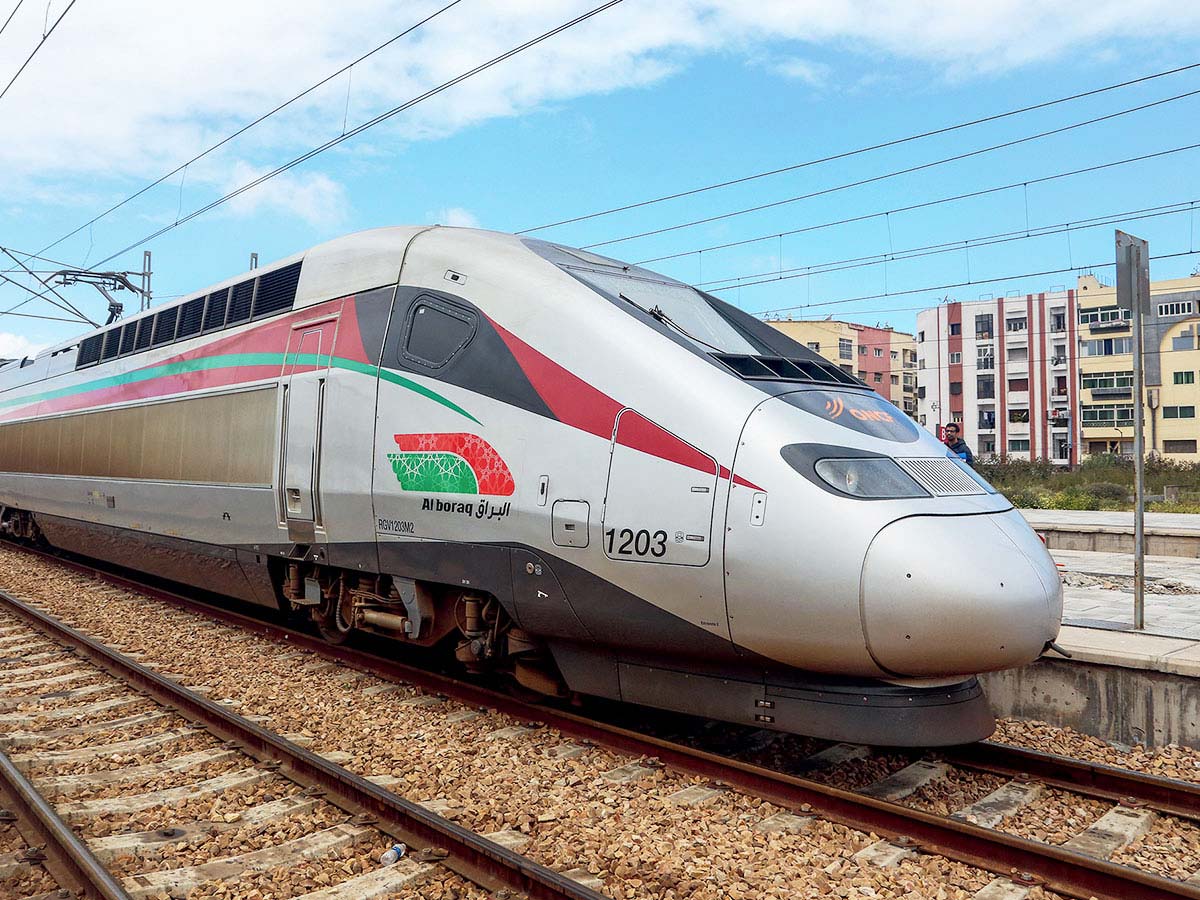PARIS > RENNES
PARIS > BORDEAUX

2017 | France
Journey
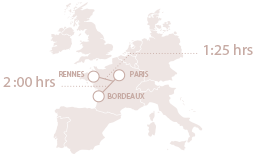
More Info
- Length in km:
> Paris-Bordeaux: 567 km,
> Paris-Rennes: 365 km - Name of the train: TGV InOui & TGV Ouigo
Direction: the Atlantic Ocean! Following the resounding success of France’s first high-speed line between Paris and Lyon, western France became the next region to enjoy the benefits of TGV. The line serves the whole of the Atlantic coast: the Loire region with its famous châteaux, the coastline and its beaches, charming seaside resorts and on past the tip of Brittany to the open sea. The mixed traffic line was launched in 1989, originating in Paris and eventually separating into two separate branches, serving western and south-western France. In 2017, the completion of both branches connected both Rennes and Bordeaux to Paris in one hour 25 minutes and two hours respectively from Paris. In their wake, these destinations offer up perfect access to the edge of Brittany and Nouvelle Aquitaine, all the way to the Spanish border. These lines are exceptional in technical, social and environmental terms, and have proved to be a new source of industrial pride for the nation.
Leaving Paris
In the heart of the French capital, the Montparnasse quarter boasts a unique history. During the ‘wild years’ (les années folles) that followed World War I, many artists were inspired by the creative atmosphere of this working-class district. Painters – Picasso, Modigliani, Soutine, Chagall, Dali, Léger, Foujita – as well as poets and writers – Hemingway, Aragon, Breton, Sartre, and Henry Miller – all played a part in the golden age of Montparnasse, which lasted until the crash of 1929. Here, in the narrow streets of this lively neighbourhood, one can still imagine the Paris of these legendary artists. The Tower of Montparnasse, built in the 1960s and visible from all corners of the city, has become a landmark. All TGV trains heading for the west and southwest of France, as well as local trains, depart from Paris-Montparnasse.
To coincide with the TGV Atlantique launch, in 1990 the station
underwent modernisation, adding the magnificent Porte Océane
entrance, which features a vast glass canopy whose waves recall
those of the Atlantic itself.
This ‘ocean’ feeling is also to be found in certain western stations to
the west of Paris, such as Massy TGV to the southwest of Paris, with
awnings like the sails of ocean-bound ships and a concourse
designed to resemble a boat deck. Massy TGV is located along the
shared section of the two Great West lines. This strategic station for
the TGV network eases congestion at Montparnasse station, and
serves as a hub for trains arriving from the north, south-east, and
south-west of France.
A line to the Atlantic
1989: a new date for the second generation of
TGVs bound for the Atlantic at 300km/hr, beginning
with 76 km between Paris and Connerré (Le
Mans). The project is an ambitious one, creating
two separate lines to serve the west and southwest
of France. Originating in Paris, a shared section
of track joins the two lines, which later
separate to form a huge ‘Y’; one route peels off
towards Bordeaux, while the other heads for
Rennes and Brittany.
The two lines were fully completed on 2 July 2017.
This was the first time that France inaugurated
two separate lines simultaneously, thus adding
500 kilometres to its railway network. The two
routes reduce travel time between Paris and Bordeaux
by one hour, and by 39 minutes between
Paris and Rennes.
Connections between the highspeed line and the conventional network allow intermediary cities like Tours and Poitiers to benefit from these time savings.
Paris-Bordeaux, the journey
Shortly after leaving Paris-Montparnasse station, the TGV proceeds through a series of cut-and-cover tunnels that run under the
south of the city, forming a green corridor at surface level. Once above ground, the train crosses fields of wheat and beet stretching
to the horizon, passing the turbines of a major wind farm.
After the flat expanses of France’s wheat basket, La Beauce, the train descends into a tunnel specifically built to spare the vineyards
of Vouvray, known throughout the world for its fine white wines. Three viaducts provide passage over the majestic Loire River,
home to the proud castles and stately homes of 16th-centuryFrench kings: Amboise, Azay-le-Rideau, Chenonceau, and Chambord,
among others. These monumental edifices are built from Tuffeau limestone, illuminating the sumptuous gardens that surround
them.
The TGV passes close by Tours, the birthplace of Balzac and an ideal stop along the chateaux tour. Embankments, tree shelterbelts,
noise barriers…the line keeps a low profile to respect its environment. Poitiers, ‘the city of 100 bell towers’, is today better known
as the home of Futuroscope, a high-tech theme park.
The sun shines brighter as the train heads south and to La Charente, where hundreds of Romanesque churches stand tall, Cognac
matures in oak barrels, and each year the international festival in Angoulême celebrates the world of graphic novels and comics.
The TGV crosses the Dordogne twenty kilometres north of Bordeaux. The banks of this powerful river unveil a unique heritage: walled
towns, proud castles, and Les Eyzies – the prehistoric capital of the world located a few kilometres from Lascaux, where visitors
can admire the great vestiges of the Palaeolithic era. The TGV crosses the Garonne River, then enters Bordeaux.
Paris-Rennes, the journey
The TGV passes to the right of the Bordeaux-bound high-speed line about
130 kilometres south west of Paris, then continues on towards Rennes and
Brittany. The train circumvents Le Mans, the first city in the west of France to
welcome the TGV arriving from Paris, in 1989. This stop has made Le Mans
much more than a mere motor racing circuit destination that comes alive for
24 hours once a year. The city’s economy has been transformed. Over 100
businesses have set up shop in the neighbourhood around the station. Hundreds
of people living in the Sarthe region travel back and forth daily by TGV
to work in Paris, while benefitting from property prices far lower than those
in the capital city.
The train crosses the Sarthe River. Continuing south is the well-known Virgule
de Sablé, a four-kilometre-long railway junction connecting the Paris-Rennes
high-speed line to the conventional line bound for Nantes. A first of its kind
in France, the link provides fast infrastructure for a new generation of
regional trains operating at 200km/hr. The TGV passes close by the famous
Solesmes Abbey, a Benedictine monastery, before crossing the Vicoin Viaduct
to arrive in Brittany, where hilly fields of corn and vegetables give way
to hollows and prairies. Before entering Rennes Station, the train plunges
under a part of Parc de la Monnais, the green oasis of the city. Rennes is home
to the remote-control post for all TGV operating in the west and south-west.
A veritable control tower that monitors the headways between trains, as well
as other functions.
A construction project with an environmental focus
Respecting the environment has become a major focus for large-scale infrastructure
works. Over the past ten years they have been subject to increasingly
stringent environmental constraints. With this in mind, the
Paris-Bordeaux line was designed to cross the landscape as unobtrusively
as possible. A challenge that has required many engineering structures.
The earthworks were often carried out depending on animal breeding and
nesting seasons. Crossings and special features were built to protect some
280 recorded animal and plant species. The tiny Blasius newt, an extremely
rare and endangered amphibian, held up five kilometres of construction work
on the LGV Océane for… two months, for the time it took to relocate this creature
to another location specially adapted to its species. There are similar
stories along the two western lines. In Gironde, it was a species of pink garlic
that required protection; in La Vienne, 6,000 freshwater pearl mussels were
moved prior to the commencement of construction work on a local viaduct.
Environmental compensation was also introduced to maintain the biodiversity
of sites: ponds for amphibians, insect hotels, planted woodlands to provide
habitats for birds, and so forth.
To protect their land, the Vouvray wine producers won their appeal to require
the TGV to pass through a tunnel underneath their precious vineyards. Better
still! The track was laid on anti-vibration, rubber pads to avoid shaking the
cellars and disturbing the ageing process of these secular wines, described
jokingly by some as the TGV (Très Grand Vouvray).
Yet the most iconic structure along the line must be the viaduct that spans
1,300 metres over the Dordogne River, with its foundations sunk to a depth
of 40 metres. Some 40 companies worked on this construction site.
→ TGV-Atlantique near the salt marshes of Guérande, near Croisic Station, 1991.
Archaeological finds
All major changes to the landscape are today subject to archaeological diagnostics. The high-speed lines bound for the western France are no exception, and excavations here have led to amazing discoveries. An exceptional opportunity for archaeologists! Thus, the prehistoric site at Mayenne was discovered in a flint deposit dating back 40,000 to 50,000 years BC. Between Tours and Bordeaux, Neolithic and Bronze Age necropolises afforded precious information on the daily lives of farming communities of those eras. Hewn flint, objects made of metal, bronze and iron, tools, weapons, clothing, and ancient coins were all discovered at several sites. All the finds have been put on display at various exhibitions open to the public. A lucky chance for history enthusiasts.
→ Black Périgord landscape in the Dordogne Valley.
Memory of a country
To the north of La Charente arose a welcome initiative: a “Photographic Observatory of Ruffécois landscapes traversed by the LGV”. After reaching an understanding with the constructor of the high-speed line, photos were taken from 30 viewpoints before, during, and after the works. These images were taken in the same seasons and at the same times, from angles capturing the panoramas as seen by local inhabitants.
Public private partnership (PPP) – the first of its kind in France
A privately-held company and subsidiary of the Vinci group, LISEA was designated as operating manager of the high-speed line between Tours and Bordeaux. LISEA obtained its concession for a 50-year duration, covering part of the financing, the construction, operation and maintenance of the line, in exchange for the track fees paid by every passing train. For the LGV Bretagne (Brittany)-Pays de la Loire, the private company Eiffage Rail Express was responsible for building the line and subsequently maintaining it over the next 25 years for a quasi-fixed lease payment.
→ TGV Euroduplex at the platform, Bordeaux-Saint-Jean Station.
A TGV in Atlantic colours
To celebrate the Atlantic line, a new TGV was unveiled in
1984. Its blue and silver livery was styled by the talented
designer Roger Tallon, who also revamped the interiors. This
second-generation TGV is longer – 10 passenger cars
instead of 8 – as well as more efficient, more comfortable,
and more aerodynamic.
Twenty-eight years later, it has been gradually replaced by a
double deck trainset, decorated with a wide ocean-blue strip,
subtly streaked with red. This trainset operates at 320km/hr
and can be coupled to another at peak travel times to double
the passenger capacity. It is resolutely modern. Inside, the
sense of comfort is visible: seats clad in leather and wool –
grey and red in 1st Class, grey and blue in 2nd – more leg room,
flip-down tables in wood, electrical outlets…. Designed to
stand the test of time, space on board has been optimised to
allow one item of luggage to be stowed under each seat, and
display screens provide passengers with information throughout
their journey…. This comfortable atmosphere is even more
pronounced in 1st Class, where pivoting seats can be positioned
in the direction of travel, where every passenger feels
ensconced in comfort to read, work, or sleep. The ‘designer’
buffet car offers quick and good quality options. On-board service
has also improved. With gates at Montparnasse station for
validating tickets prior to boarding, fewer systematic checks
are required, and thus controllers are more available to meet
the needs of passengers.
In 2017, in order to compete with low cost airlines, car-sharing
and low-cost coach travel, the TGV introduces a new commercial
brand: inOui. A means of aligning the trade names of its
offers (inOui, Ouigo, and Ouicar car hire). The premium brand
inOui differs from its low cost little sister Ouigo, launched in
2013. Easily recognisable by its sky-blue trainsets with fluorescent
pink doors, Ouigo has proven to be a success. Fewer
on-board services, one travel class, a single piece of hand
luggage, and tickets at budget prices; Ouigo offered mass
appeal to families as well as a new type of traveller who would
never have taken the TGV without this commercial offer. The
names of the service may change but not the TGV brand, the
historic name of this high-speed train.
Arriving at Bordeaux
To say Bordeaux has changed over the past 20 years would be an understatement. Famous the world over for its fine wines with prestigious labels such as Château-Margaux, Château Mouton-Rothschild, and Château-Lafite, the city has promoted its architectural heritage with meticulous urban regeneration. It has admirably revived the Garonne riverfront, transforming the quaysides of the left bank into a generous ‘green’ walkway, the realm of pedestrians, defined by its elegant mirror of water. Bordeaux cultivates the image of a dynamic economic metropolis, and the city’s appeal has been boosted by the new high-speed line, linking the city to Paris in just two hours. Bordeaux Saint-Jean station has had a facelift. Every mode of mobility has been revised.
TGVs arriving from or departing for Paris, Toulouse, and Spain cross paths under the vast 19th-century glass canopy roof, now beautifully restored. The rear section of the station has been opened up, thus connecting at last the downtown area to the Belcier district. Pont de la Palombe Bridge, built in 2018, allows pedestrians, cyclists, and cars to cross the 30 rail tracks. Construction of the Bordeaux Euratlantique business district is transforming the area around the station, as well as the two neighbouring towns of Bègles and Floirac.
Arriving at Rennes
As the capital of Brittany, Rennes is a lively, young and effervescent city where day and night, thousands of students bring to life the heart of a city that is fuelling innovation, especially in the digital field. Rennes station has changed dramatically. The many Paris-Rennes TGV services every day and the arrival of a second metro line scheduled for 2020 are transforming the station into a multimodal hub. A recently-built pedestrian and cycle bridge links the north and south, previously cut in two by multiple railway tracks. With its high ceiling, the station enjoys natural lighting thanks to a transparent roof covering. Large ‘waves’ of glass and steel on the station’s façade are a hint that the ocean is not far off. Most emblematic among this urban development is the new district that has sprung up around the station: EuroRennes and its clutch of offices, accommodations, and shops.
Expected benefits
Faster trains, more frequent services, the TGV brings local businesses closer
to the capital and to European markets; the short journey times attract customers.
Bordeaux and Rennes bear witness to the development of teleworking,
made possible by office spaces provided in the stations or installing
business hubs in the surrounding areas. The regions served by the TGV expect
to attract both business travellers and tourists.
“Go west” (Passez à l’ouest) - the humorous advertising campaign launched
in the region of Brittany to celebrate the opening of the Paris-Rennes line -
extols the region’s quality of life and the beauty of Breton landscapes. Yet the
new line is inseparable from the upgrading of tracks running towards Brest
and Quimper. It forms part of a Brittany high-speed project that over time will
bring benefits to all the territories in the region – from Mont-Saint-Michel to
the tip of the peninsula. In respect to the Paris-Bordeaux line, the TGV, which
continues its way to Toulouse, saw traffic increase by 60% in a single year
for this destination, now four hours from Paris. The high-speed extension
towards southern Bordeaux opens up great opportunities towards Bilbao for
business and culture, or Arcachon and the Basque Country for leisure.
New skills
Building the two high-speed lines construction called for a major recruitment drive, mobilising thousands of people and giving new impetus to local employment. Among other benefits, the line has boosted the employability of unskilled young people and the longterm unemployed. Several hundred workers, thus better qualified, found new jobs after construction works ended.
a selection of HIGH-SPEED LINES by creation date
1964

TOKYO > OSAKA
1992

TURIN > NAPLES
1992

MADRID > SEVILLE
2002

COLOGNE > FRANKFURT
2008

BARCELONA > MADRID
2010

SEOUL > BUSAN
2011

BEIJING > SHANGHAI
2014

ANKARA > ISTANBUL
2014

LANZHOU > URUMQI
2016

SHANGHAI > KUNMING
2016

TOKYO > HAKODATE
2016


ZURICH > MILAN
2018

BEIJING > HONG KONG
2018

TANGIER > CASABLANCA
